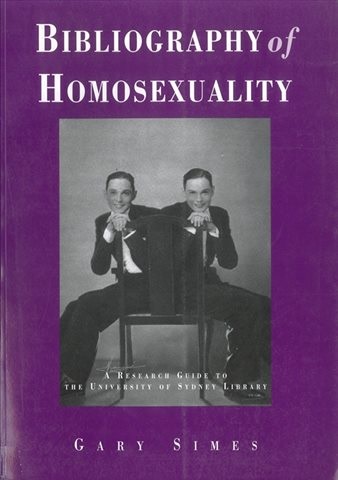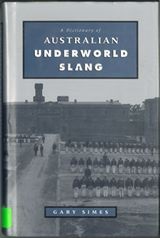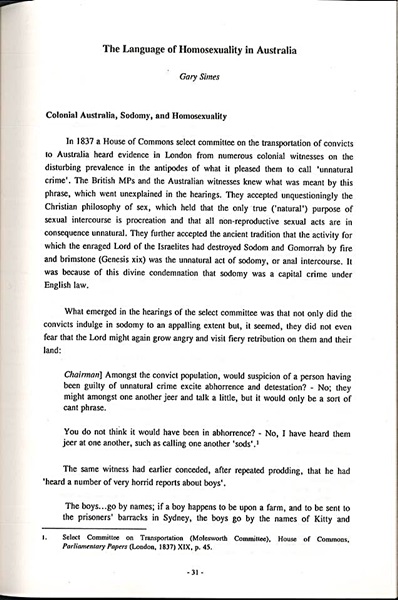



To read any of the obituaries of the people listed, click on their name and you will be taken to the particular item.
 |
This linocut was done by Lenore Bassan for the SPAIDS Reflection Area in 2006 |

Article in the Sydney Morning Herald - 30 December 2014
By Liam Mannix, Reporter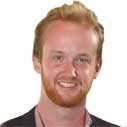
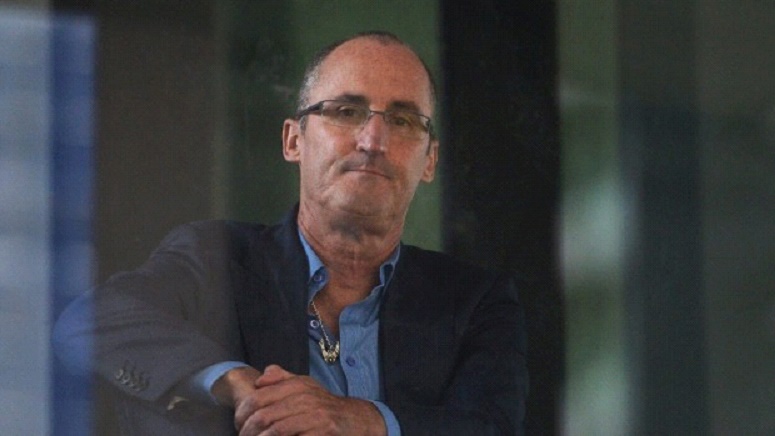
Euthanasia campaigner: Peter Short. Photo: Joe Armao
Born 28 January 1957, Died peacefully in Cabrini Pallative Care on December 29, 2014
Physician-assisted death campaigner Peter Short, whose advocacy and plight inspired draft dying-with-dignity legislation in the Federal Parliament, has died aged 57.
Mr Short passed away peacefully on Monday morning, in palliative care and with wife Elizabeth holding his hand.
Mr Short's campaign was based on his belief that it was undignified for terminally ill to not have the choice to end their own lives under carefully controlled circumstances. Mr Short was given the means and the knowledge to end his own by physician-assisted death campaigner Dr Rodney Syme.
Mr Short did not take that option.
His wife Elizabeth said Mr Short, like everybody who is given the option - albeit illegally in Australia the moment - benefited hugely because having choice removed fear and anxiety.
"The fact that Peter had the knowledge and the means to end his own life was an invaluable part of his palliation," she said.
"It allowed him to live the remainder of his life exactly as he wanted pushing himself as hard as he wanted, working 12 hour days in his support of the proposed dying with dignity legislation, making wonderful memories with his family and friends.
"He did not fear the end as he knew it was his to control he if so chose."
His cousin Michael Short, editor of The Zone section in The Age, said Mr Short's final year was made so much richer because he had that option.
"Peter embodied and experienced the benefits of the change in the law he was seeking", Michael Short said.
"Having the option is the important thing. That's what helps people."
In January Mr Short was told his oesophageal cancer in remission for five years had returned, and would kill him. At the time, his doctor told him he had only five months to live, a prognosis he would significantly outlive.
After his diagnosis, Mr Short became a fierce campaigner for the right of the terminally ill to have choice at the end of their lives.
He worked closely with federal Greens senator Richard Di Natale on the development of a bill that would make it legal for doctors to help terminally ill, mentally competent adults end their lives.
Senator Di Natale, the Greens health spokesman, introduced the draft legislation earlier this year. It was referred to a Liberal-led all-party senate committee, which held national hearings and received many submissions.
The committee, led by Liberal senator Ian Macdonald, recommended a free vote in the Parliament for the legislation, and supported its passage.
That bill is expected to come before the Senate next year. When it is introduced, the senator hopes to have it co-sponsored by an MP from each major party.
For months before his death Mr Short sought a meeting with Prime Minister Tony Abbott to urge support for the bill and a free vote for Coalition MPs.
Mr Abbott rang Mr Short days before his death, and during a half-hour conversation pledged his MPs would be given a free vote should the bill reach the floor of the Parliament.
That was like reaching "the top of a mountain", Mr Short told The Age at the time.
A month ago The Age ran a week-long campaign in support of a change to the law to allow physician-assisted death in strictly regulated circumstances.
Much of his story he documented himself, on his blog Tic Toc Tic Toc dying to a killer clock.
On Monday his wife Elizabeth posted the final entry.
"My beautiful husband Pete died this morning at 12:20am. He died peacefully and I was privileged enough to be sitting on his bed holding his hand at that time.
"Pete's decision to opt for palliative care brought him to a place of calmness and serenity and for all of us, safety and security. It allowed Pete to relax, stop fighting and go calmly to his happy place.
"Thank you all so much for your constant love and support, it has meant the world to us."
------------------------------------------------------------The following letter in The Age newspaper on 31 December 2014 drew attention to Peter Short's death:
My friend and neighbour, Peter Short, passed away peacefully on Monday, after succumbing to oesophageal cancer. His final journey was made more bearable and dignified because he was equipped with the means to end his life at a time of his own choosing, should he have elected to do so.
Peter spoke so passionately about the palliative power of having that choice and lobbied hard to make it available for all Australians suffering terminal illness, without their physician risking criminal prosecution.
Sharing his experience very publicly with the support of his family helped to bring the dying with dignity cause to public attention and has set the stage for a change in the law. Tony Abbott contacted Peter before Christmas and agreed to allow Coalition MPs a conscience vote on Senator Di Natale's draft bill in the new year. It is up to our federal MPs now to vote it into law in Peter's memory and because it is the right thing to do.
So give your MP a call now to stress your support for the bill.
Luke Simpkin, Camberwell
Article in the Sydney Morning Herald - 19 JANUARY 2015
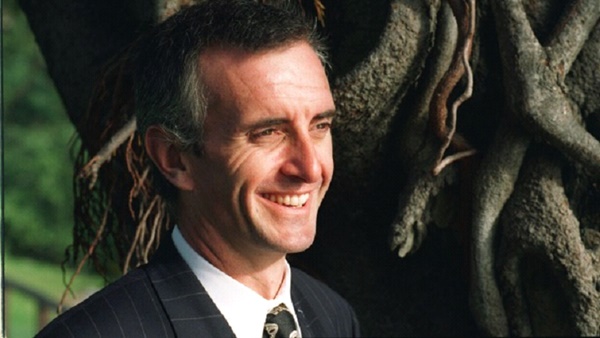
Campaigner: Paul O'Grady was known for his stance on equality and euthanasia. Photo: Robert Pearce
In June 1990, Paul O'Grady said on television that he was homosexual. Not an unusual thing to hear at the time except that O'Grady was a member of the Legislative Council and this made him the first openly gay member of the NSW parliament.
Not all reaction was positive, of course. Some politicians expressed concern that the announcement would "not be good for the place", and a few went public to oppose homosexuality.
Nevertheless, support came flooding in. "The reaction," O'Grady said the following week, "has been extraordinary, overwhelming. I've had phone call after phone call from people I don't even know saying they think what I've done is good."
But he added: "I don't think the whole question of sexuality is that important. I think there are lots of other issues which are just as relevant, such as the environment, the quality of life, law and order and public transport."
In 1996, O'Grady went on television again to announce that he had AIDS and intended to end his life himself rather than allow the virus to do it. He said the second announcement was a more difficult decision than the first one. The publicity he got for the first announcement surprised him, as he had never hidden his sexuality, although he was recorded being against "outing" other people. This time he received support from all sides of politics.
Paul Thomas Francis O'Grady was born in Ryde on July 14, 1960. After leaving school he worked in a shop and as a union organiser. He had joined the ALP when he was 15. At 24 he was Assistant Secretary of Young Labor, but failed to be elected president of NSW Young Labor. He was also a party research officer for the NSW Treasurer, Ken Booth, for seven years.
Then, in 1988, O'Grady was elected a Labor member of the Legislative Council and after his announcement went on to campaign for the gay and lesbian community and law reforms as well as other causes, although he had to fight perceptions that he was a "single issue" politician.
For three years he campaigned, unsuccessfully, to allow his partner to have equal rights with other political de facto partners, inadvertently shining the light on all parliamentary entitlements. He invited parliamentarians to march with him in the early 1990s Sydney Gay and Lesbian Mardi Gras parades. In 1993, one group marched under the banner "Politicians Supporting Mardi Gras".
O'Grady's other notable cause was euthanasia because, "voluntary euthanasia is a question of basic human rights. It is about the right of individuals to choose for themselves the quality of life they want and when they no longer enjoy that quality of life."
In 1995 he got permission from the ALP Caucus to introduce a private members bill to legalise euthanasia, and ALP members would have been allowed a conscience vote, but the bill quietly lapsed after his resignation.
O'Grady then fought for his health. When he left parliament, his immune system was weak, he weighed just 52 kilograms and he seemed not long for the world. Five years later, he was back at work, as chief of staff for the Minister for Tourism and Sport and Recreation, weighing 70 kilos and feeling great.
He attributed his renewed health to a pioneering mixture of modern medicine and holistic alternatives, including a powerful cocktail of anti-HIV drugs, acupuncture, a specialised diet and marijuana. Unfortunately, in 2011, he was diagnosed with the cancer that eventually killed him.
Late in 2011, the Independent Commission Against Corruption (ICAC) started an inquiry into political corruption. O'Grady, in hospital for cancer treatment, went on television again, this time to criticise the ALP for its culture of corruption and dodgy financial deals.
In 2013, O'Grady went to ICAC as part of its investigations on parliamentarians Eddie Obeid and Ian Macdonald. Obeid had claimed that Macdonald had never been in his office. O'Grady claimed there was a "goat track" worn between their two offices.
Paul O'Grady's long term partner, Murray Ward, died in 1994.
Harriet Veitch
The Age 21 August 2015:
By Rob Lake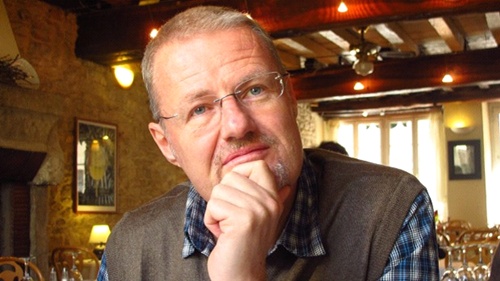
After an HIV diagnosis Alan Brotherton, pictured in 2013, threw himself into advocacy work in the sector. Photo: supplied
Alan Brotherton dedicated himself to improving the lives and furthering the human rights of HIV positive and LGBTI people in a career that spanned over 30 years. He characterised and shaped Australia's response to HIV.
Through his involvement with advocacy organisations in the 1980s and early 1990s, he helped ensure people living with HIV and AIDS were effective advocates for equitable and non-discriminatory care, support and fast-tracked access to effective HIV treatments.
He was also instrumental in the establishment of peer-based organisations Positive Life NSW and the National Association of People with HIV Australia (NAPWHA), which ensure people living with HIV and AIDS have a voice.
He personified the unique and pioneering way Australia responded to HIV by acknowledging the contribution of affected people and communities. This remarkable development altered public health responses forever and is used globally as an exemplar.
Alan Jurgen Brotherton was born in Middlesbrough, Britain, on July 9, 1963, one of two sons to Alan and Doris Brotherton, who came to Australia when Alan junior was five and finally settled in Canberra.
He attended Sterling College and then went to university on a BHP scholarship in chemical engineering, but quickly changed to a sociology major and supported himself through bachelor, honours and masters degrees from the University of NSW.
When Brotherton was diagnosed with HIV in 1985, he responded by going to Nicaragua to volunteer on the "work brigades" picking coffee for the revolution, making the most of what he then thought would be a very short life.
In the early 1990s, he was back in Sydney as the first paid employee of the Alfalfa House food co-op and driving a truck to collect waste paper for recycling. He joined a support group for people living with HIV at the AIDS Council of NSW (ACON) and began his work in HIV prevention at the council as a community outreach worker.
Brotherton was the president of NAPWHA when the results of combination treatment trials were announced at the Vancouver AIDS Conference in 1996, and his leadership and advocacy shaped the approach to treatments in Australia. NAPWHA was instrumental in getting drug approvals fast-tracked and getting people onto clinical trials pending these approvals.
His advocacy ensured as many people as possible got access to these drugs through compassionate access schemes. Without such strong and effective advocacy, the life-saving and health-giving benefits of combination HIV treatments would have been years away for many people and many more lives would have been lost.
Brotherton also held leadership roles at ACON, the Victorian and South Australian AIDS Councils, the Australian Federation of AIDS Organisations (AFAO) and the NSW Ministry of Health. At the federation, he presided over several significant HIV health promotion campaigns for gay men, such as the Getting Things in Focus campaign, and a national prevention campaign for young same-sex attracted men. His work at AFAO in the late 1990s helped to change perceptions of HIV in the gay community after the introduction of more effective treatments.
He also championed the development of a strong evidence base for health promotion and capacity building for the HIV health promotion sector nationally. He was a significant contributor to the development and implementation of most of Australia's National HIV Strategies from the mid-1990s to the present Seventh National Strategy.
While he was in Adelaide as education manager for AFAO, Brotherton met Luke Cutler, the artistic director of Feast, the Adelaide Lesbian and Gay Cultural Festival, and they became partners.
In addition to his many achievements in the Australian health sector, Brotherton contributed to global HIV work, joining the International HIV/AIDS Alliance in Brighton, Britain, in 2008, to help further their human rights and community strengthening work in more than 40 countries, including some of the poorest in this region.
Brotherton lived with HIV for almost 30 years. His death came three years after he was diagnosed with cancer.
Alan Brotherton is survived by Luke, his parents and his brother.
The following obituary was published in AFAO and written by Michael Hurley:
AFAO obituary of Alan Brotherton by Michael Hurley
Published in The Age Obituaries 22 November 2015
By Alan Mayberry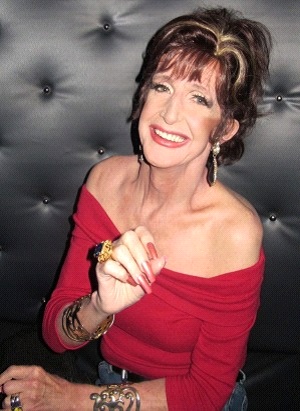
When Melbourne drag star Kevin Minogue (aka Kerrie Le Gore) and partner Paul held their first big party in 1975, everyone had to cross-dress. No excuses. To curious neighbours, Kevin explained that their theatre group was having a fancy dress to raise funds. The "change of sex" broke down barriers and people conversed. Eventually, their parties grew too big for the backyard so they moved to the North Melbourne Football Social Club.
Kevin/Kerrie, who has died at 60, had met Paul (whom he called Pearl) at the Dover Hotel after the 1973 Carlton Richmond grand final. They dated mostly at the Union Hotel in Carlton before setting up home. They shared a love of the garden and their beloved dogs, that were such company in time of ill health. Years later Kerrie declared: "Pearl has always been the love of my life always has been and always will be. We're opposites. Except we both love our animals and garden, but the rest we're totally opposite."
Who would have guessed that the Kevin Minogue, who grew up in Reservoir in the 1950s, would go on to become the mother of Melbourne drag, known simply as "God". Working in a deli by day, by night he was the toast of Melbourne in the 1980s and 90s. He had two sisters, Maureen and Judy, from whom his drag life was kept separate. Kevin attended St Gabriel's primary school in Reservoir and Marist Brothers SC, North Fitzroy. He then worked in the Public Service for a number of years before going into entrepreneurship.
In 1983, Dukes Hotel in Abbotsford wanted three males to do a drag show. Kerrie jumped at the chance, starting the Troll Dolls with Coco, Chanel and Timber. At that time he was busy all day at the Port's Own Deli in which Pearl was a partner so gays would go there to help cook, one on salmon patties, another on coleslaw control. Recalled Kerrie: "I'll never forget the time I lost my ring in the coleslaw. I couldn't find it anywhere. Tuesday morning a really good customer came in with it and said "Is that yours?" and burst out laughing. See, that proves it was home made! It was beautiful food, before its time in actual fact." They sold the deli in 1985.Kerrie adored the football, and had a footy family outside of drag revelling with his sisters in the vast Collingwood Magpies network. He made friends very easily with his caring and nurturing nature. He was the life of the party, but the secret to his success was his ability to listen and take an interest in everyone he met. No matter what age or station in life, people flocked to him.
Kerrie met Ken Payne, long-time Commercial Road gay venue owner, at Payne's club Mandate and worked for him for 15 years. "He had been to one of our backyard parties and said I had great organisational skills," said Kerrie. "No wonder he'd heard of us those parties left Mandate empty. I worked in his office by day, marketing limited edition prints and coin watches people thought it was just an entertainment empire, but so much more was involved."
Ken Payne wanted the Troll Dolls at his Market Hotel and they crossed the Yarra to make it one of the hottest places to be seen in 1985-86. Then with Kevin Attwood, Kerrie started Le Gore's Backyard at Mainframe in St Kilda before transferring to The Xchange where it stayed from 17 September 1989 till 1 November 1992, becoming a Sunday institution. Then it was full-time at Ken's new 3 Faces. Current drag stars like Paris, Rita, Miss Candee, Caresse, Tabitha, Sue Ridge, Barbra Quicksand, Doreen Manganini and Skye Brookes all owe their fame to Kerrie's guidance. The golden age of Commercial Road had begun.
Kerrie said: "'When I perform I prefer intimacy with an audience. I like people being right next to me. Celebrities never mattered to me at all. I've always been more thrilled and pleased, and rewarded by interviewing kids who bring their mothers to see the show. I really do love that. On Mothers Day at Mandate and Xchange all the queens brought their mums along. And how I loved rummaging through their mum's handbags on stage."
Kerrie's health had not been good over the past five years with foot problems, skin cancers, a dicey heart, a hip replacement and knee reconstruction all without complaint. He did so much for others throughout his life. From voluntary shows for Midsumma, the Victorian Aids Council, to Belles and Fantasy Balls and Rainbow Awards. He helped numerous younger entertainers find their way. He cared for everyone despite his own adversity till the very end.
As Ken Payne said: "Kerrie was the Barry Humphries of the gay scene, using a frock and a bonnet, like Dame Edna, to create the Le Gore we came to cherish. And, like Barry, it allowed him to do what he loved doing most, look at the world in general, and our scene in particular with a microphone in his hand, and make merry with it.
"And as we all know, he had no equal in that. I have no idea what the Universe has in store for any of us but Kerrie if you are in the corridor to eternity and end up at St Peter's Gate I know you will be organising another Le Gore's Backyard.
"Please remember to leave a ticket at the gate for me."
Kerrie was farewelled at a funeral attended by more than 400 people at Ormond Hall.
Alan Mayberry is a family friend.
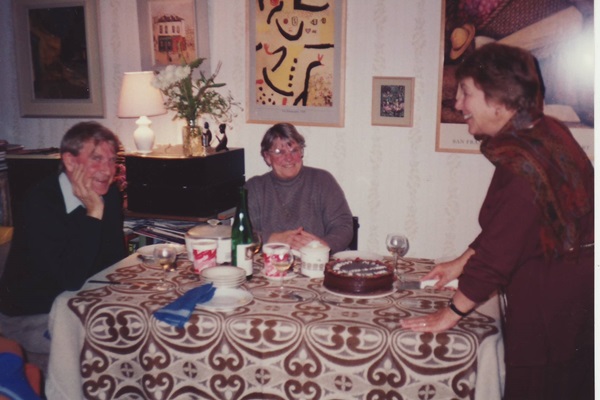
In JUNE 1994 Mannie De Saxe's sister, Molly Sidley, came to Sydney on her first - and last - visit to Australia to see her brother. While she was here Mannie organised a dinner party at his flat in Belmore, Sydney, for 2 brother-and-sister families to meet each other. The evening was a great success, but again it was the first - and last- time that Julie and Molly met each other.

Julie's partner Lola Lindley, Julie and Ken in Maryville, near Throsby Creek in Newcastle, between SEPTEMBER 1995 and MAY 1996.
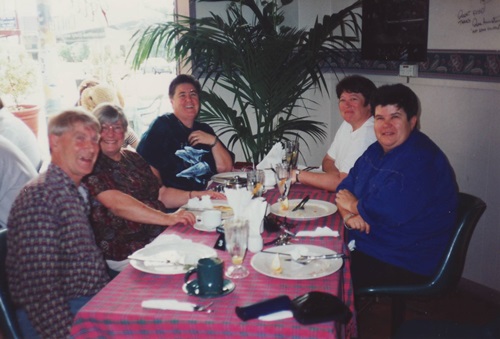
Breakfast at a cafe in Newcastle City, showing left to right: Ken, Julie, Lola, Jo Eccleston, Sandi Banks, between SEPTEMBER 1995 and MAY 1996.

Julie was invited to Newcastle to "marry" a gay couple as a church elder in the Metropolitan Community Church, in Prince Edward Park between MAY and DECEMBER 1996.
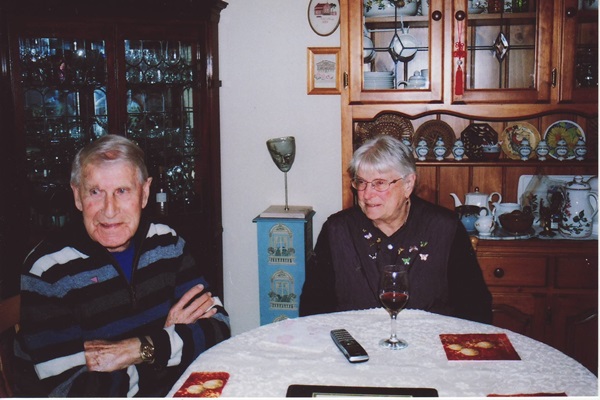
Photo by Mannie De Saxe of Julie's brother Ken and Julie on her 90th birthday, 4 JULY 2015
Firstly, I would like to say thank you to everyone who has joined us today, she would be thrilled to see you all here to pay your respects. And to those who have travelled a long way to be here, we are extremely grateful.
It’s really hard to know how to sum up such a remarkable life in a few words.
She was an amazing woman, with a razor-sharp intellect, and at times, an equally sharp tongue.
I won’t pretend that she was an easy person in her younger years, she found it hard to express true affection, and as Robert said, very definite about how things should be done, and how people should live their lives. But for all that, everyone who knew her, at whatever stage of her life, learned something from her, whether it be positive or negative.
When we were very young children, I remember watching from the wings of a theatre she and or dad were performing in, and being in absolute awe of both of them. From Noel Coward to Shakespeare, they gave it their all, and I was thinking last night, this is how she lived her life. She gave everything to whatever project or cause she was focused on at the time, always passionate about life.
She told me when she was growing up, and into her 20’s, she always felt that her parents disapproved of her life choices, and was constantly trying to prove herself. Women weren’t supposed to do the things that she wanted to do, but she did them anyway. I guess that’s why she wanted we 3 children to make something of ourselves. Unfortunately Chris didn’t get the chance to really shine, but I think she was happy with the way Greig and I turned out, and I do know she adored her grand-children, and their children.
I found a note she had written fairly recently, and I would like to share it with you, as I think it sums up the contentment she had found in recent times:-
‘When you come down to it, I haven’t a great deal to show for a long life. The material things have come and gone, but they are not the important part of life. The memories of great theatre, ballet & opera are precious and worth a king’s ransom. The memories of my children growing up, of achieving at school, in academia and music are with me, and fill my heart with joy. I am proud of my children. I am proud of some of the things I have achieved as well. Against all odds to become a teacher and then to acquire a theological degree meant a lot to me. To have helped a few people in my life was my aim – I hope I did just that.’I think we can all agree, particularly in this final chapter of her life, she achieved that, and some. Her passion for this church, and the wonderful friends she found here in Beechworth, sustained and enriched her, and I think she passed feeling that she was needed and that even at this age, she still mattered. The gentleness and kindness that was always there, showed through more easily in recent times.
Everyone who knew her was touched and enriched by her, and I for one know that life will never be quite right without her.
On behalf of all her family, again, thank you all for coming out on this warm day to see her off into the next chapter.
Julie's partner Lola Lindley died on 11 OCTOBER 2016, just 6 days short of her 75th birthday on 17 OCTOBER.
Firstly I would like to say thank you to Lola’s nephew Steven, who has come to represent the Lindley family today, with his son. It’s lovely to see them here.
It’s hard to know how to sum up a person like Lola, in anything less than a small novel.
She was a challenging woman, opinionated, loud, pig-headed, and always liked to be the centre of attention. She was never in the wrong, and didn’t believe in apologies at all.
And yet, also generous and loving, with a wicked sense of humour. There was a gentleness to her that she didn’t share with everyone. You could always turn to her if you needed help or support. Any relationships she had were always complicated, but a fiercely loyal friend when she was needed.
From the stories she shared with me about her childhood, I gather it was a difficult and traumatic upbringing, and she carried the scars from her early years well into adulthood.
For all that, she adored her parents and brothers, all of whom pre-deceased her. I know she felt the loss of both parents and her 4 brothers very deeply. Especially her mother Amy, she was very close to Amy and mentioned her constantly all her life.
I had an email from her niece Jo last night, with a few memories of her Aunty Lola. She said her early memories were those of laughter and good times.
I know she loved her years in the Army, I know she loved playing sport, particularly softball, and was an absolute cricket fanatic!
After the army she worked as a security guard, and prison officer, but the bulk of her working life was as a boarding house mistress in several elite colleges, the last being Frensham in the southern highlands. She adored the girls, and the job, and was adored in return. This was the happiest I had ever seen her, the maternal side of her was quite a surprise, and when she retired it left a gap in her life that she could never really fill. She filled that gap as best she could with my boys, whom she absolutely adored.
As Jo said, she made peace with God and herself when she met my mum Julie, and they shared good and bad times for 24 years. She struggled with relationships, but she finally found peace and faced and banished a lot of demons while she was with Julie. Beechworth was the happiest and most settled she had ever been.
Something else Jo said hit home to me. She said Lola’s friends are the family she chose and what a wonderful family they have been to her. And even though Lola didn’t think most of her family cared much about her, I know for a fact she will be sadly missed by all of them.
I will miss her. We had a very complicated friendship, and often it was a challenge to remain friends, but I believe I am a better person for having known her. As are we all.
I would like to say a very special thank you to her carers from Yamaroo Aged Care. They made her feel loved, and safe, right to the end. Her passing was so much easier because of the warmth and compassion they showed her.
No-one who ever met Lola could forget her. She touched everyone she met in a different way.
Thank you for coming along and joining us in saying farewell to our dear friend.

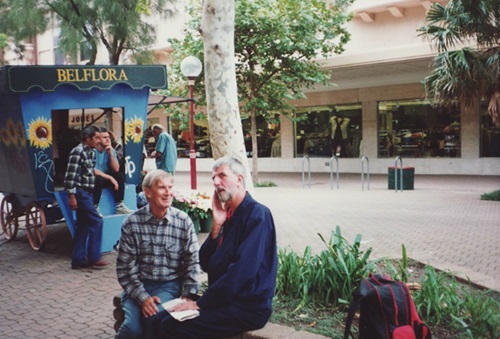
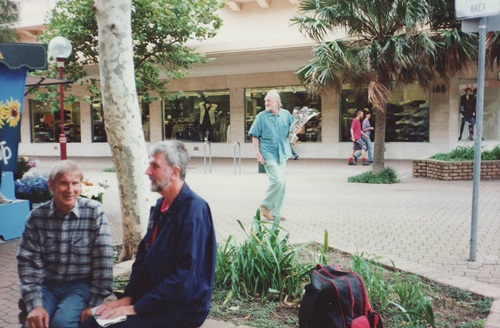
Philip Lidbury and John Foxall, long-time partners, in Newcastle in 1995
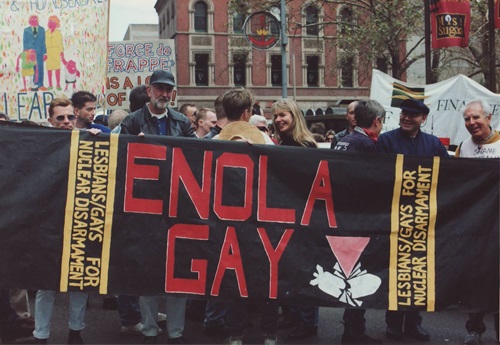
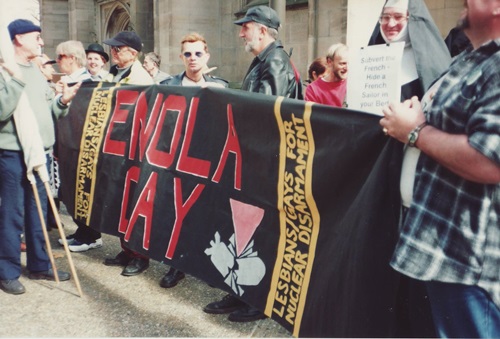
Philip Lidbury joins Lesbian and Gay Solidarity in Sydney on Hiroshima Day in 1995 (photos by Ken Lovett and Mannie De Saxe)

From The Age, 5 March 2016
By Carmel Shute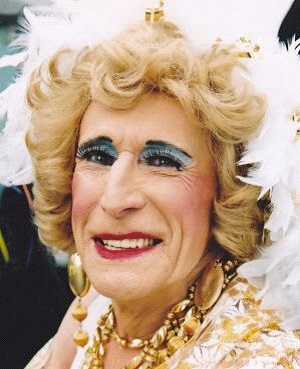
It was an inspiration to many, the way St Kilda activist Richard James celebrated ageing as one of the joyous stages of life. Richard, who has died at 84, was a passionate crusader for older people, including gay and bisexual men.
In the 1990s Richard became a member of Port Phillip Council's now-defunct Gay and Lesbian Advisory Committee and helped found Vintage Men, an organisation for older gay and bisexual men.
Vintage Men, who met in St Kilda, would travel by bus to march in the Sydney Mardi Gras in Sydney. On one occasion James was interviewed by Elle McFeast for ABC news. After the parade, Vintage Men retreated to a pub in King Street, Newtown. When the large TV screen showed Richard loudly proclaiming their rallying cry, "We're grey, we're gay, we're here to stay", the place erupted into cheers and whistles, more so when patrons realized that Richard was there with them.
Always on the lookout for more media coverage, he decided to appear in drag at a high profile event at Ormond Hall. He discovered that he rather enjoyed the experience and the following year appeared at the Mardi Gras as Gloria Swanson. His new persona meant that he spent more time in St Kilda, enjoying drag venues and putting on paid performances as the "Baroness of Balaclava" at the Greyhound Hotel. He was also able to indulge his wicked sense of humour.
Richard became a regular star of St Kilda's annual Pride March. Along the way, he learned to sew so he could make his own drag costumes. He couldn't afford to buy them and all those sparkles and sequins were pricey. He also made his own curtains and cushion covers when he moved into John Cribbes House in 2000 as a tenant of the St Kilda (later Port Phillip) Housing Association. There he brought intelligence and an astute sense of politics to the people who needed it most not just to his fellow tenants but to the broader community, anyone without a voice.
Richard took up painting as the walls of his unit were bare and contributed a number of works to tenant exhibitions sponsored by the Port Phillip Housing Association. Several of his artworks have been donated by his family to John Cribbes House. He supplemented his pension by clipping the local papers for the council media unit.
In 2000 Richard also became a founding member of Port Phillip Council's Older Persons' Consultative Group, serving for 15 years. His eloquence, passion and charm did much to further to the cause of older people. He was remarkable for his enthusiasm and his ability to engage with people and issues. Richard brimmed with good ideas about how to promote the group's activities, especially the annual Seniors' Festival (where he once participated in a debate entitled 'Sex gets better with age') and its writing competition for which he was a judge.
Richard played an active role in the campaign to get gay activist, Darren Ray, elected to Port Phillip Council in 1999. Ray won by three votes. Later, when he became mayor, Richard did his ironing.
Four years ago, Richard became very ill with chronic obstructive pulmonary disease and started to receive personal and home help from Wintringham's community aged care program. Taurus Ashley, a former partner and great friend, also helped care for him. They often attended theatre and music events in the city.
Richard was able to get about with the aid of a motorised scooter. He continued to serve on various community committees, including the Inner South Primary Care in Health. He also worked as a volunteer at JOY-FM, both on and off air. In 2014 Richard participated in a committee established by St Kilda Community Housing to develop a survival kit for rooming house tenants.
Richard was born in London and, during the Blitz, was evacuated to the country along with his mother and sister. His father was a prisoner-of-war of the Germans. He won a scholarship to a boarding school and finished his education at 17. At 18, he was conscripted, serving two years in the Royal Army Service Corps. In 1954 he married Doreen Short and they emigrated to Melbourne.
Richard was married for 35 years, a father of four and grandfather of nine. In his later years, he identified as bi-sexual. He worked in insurance and later retrained as a social worker. He was an accomplished pianist and often played keyboard for seniors' events and programs. He attended the local Trinity Church and was a member of the vestry.
Richard died of a heart attack in his sleep after attending a Port Phillip Housing Association art exhibition. The next Port Phillip Housing Trust development will be named after him.
Carmel Shute was a friend and colleague.
The story of Cecil Willams and his extraordinary life is yet to be written. This obituary may help to jog the memory of those, still alive, who remember Cecil and the issues and politics he was involved with in South Africa and the effect it has had on South Africa and its constitution - particularly in relation to sexuality, part of which is because of Cecil's friendship and his politics and work with Nelson Mandela and the African National Congress of the 1940s, 1950s, 1960s and beyond to this day. This man needs to be remembered for everything he was and stood for.
Cecil Williams taught English at King Edward VII High School in Johannesburg and he was there when I got to high school in 1939. Once the war started and he was an Englishman, it wasn't long before he was in uniform and was gone into active service in the British Navy. There were all these rumours at school about his sexuality, but we only found out much more when he was arrested with Nelson Mandela in 1962 or thereabouts. Unfortunately I was not in his English classes - apparently they were always interesting and entertaining. It seems none of us knew about his politics and political activities.
(Above paragraphs by Mannie De Saxe, August 2016)
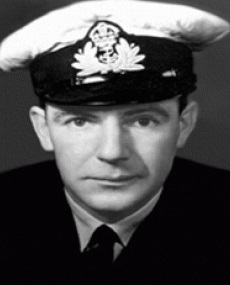
Cecil Williams was born in Cornwall, England in 1906. Williams whose father was a blacksmith left Cornwall for Johannesburg in 1928. After his arrival, he worked as an English school teacher before switching to journalism during Second World War. Williams then worked as a theatre director producing plays using black and white actors and by the 1950’s, he had become a well known figure particularly in Johannesburg where he lived. Amongst his productions is the Kimberley Train (1959) which was an anti apartheid production. With him being gay at a time when homosexuality was considered an illegal lifestyle by the government, he would often get assaulted.
Williams was active member of the Springbok Legion and the War Veterans Action Committee (WVAC) which was formed in April 1951. He initially served as the Legion’s secretary while also serving as an appointed ‘adjunct’ administrative officer of the Steel Commando. In 1952 he was elected as Chairman of the Springbok Legion at its Conference. Williams worked closely with Bram Fischer in bringing together the Legion and the Congress of Democrats (COD). On 28 August 1953 just before the conference where these two organizations would unite, the Legion’s offices were raided by the security police. The Minister of Police ordered Williams together with his colleague Alan Lipman to resign from any organization that they belonged to. In addition they were prohibited from attending any gathering or meeting for 2 years.
After the formation of the COD, Williams served in the first executive committee later serving as its Vice chairman. He later became part of an underground unit that included Norman Levy, Rusty Bernstein, Ruth First and Rica Hodgson. In 1959 Williams was tried for treason but later acquitted. His involvement in activities of the banned South African Communist Party (SACP) and opposition to racism led to his contact with Nelson Mandela. After the banning of the ANC and the formation of MK, Williams became involved in underground work of MK. For instance, when Mandela returned from military training in Addis Ababa, he was met by Williams in Bechuanaland (now Botswana). They continued to work together until 1962 when Mandela was arrested posing as David Motsamayi, a chauffeur for Williams.
The story of how Mandela was caught got much publicity; however, not much was ever published about the man he was driving that day. Though he was involved in the struggle, Williams kept that part of his life separate from his personal life. Consequently, few people knew about his political activities and his lifestyle as a gay person. After the arrest of Mandela, Williams left South Africa for Britain where he lived until his death in 1979.
In 1998 a film about Williams titled ‘The man who drove with Mandela’ was released. The movie is more about the man that Williams was, very little emphasis is made in the film on the Mandela arrest incident despite the title suggesting otherwise.
References:

17 AUGUST 2016 from the Sydney Morning Herald:
Refugees' restaurant provided a welcoming taste of home for survivors of the HolocaustMasha Zeleznikow, who has died aged 89, formed with her husband Avram the dynamic duo that established the iconic Acland Street, St Kilda cafe Scheherazade.
Masha Zeleznikow was born in Sosnowicz, Poland in 1926. Her early years were comfortable – her father, Josef Frydman, was a successful businessman.
Her mother Jocheved, who Masha loved dearly but did not see as a role model, was a stay-at-home housewife.
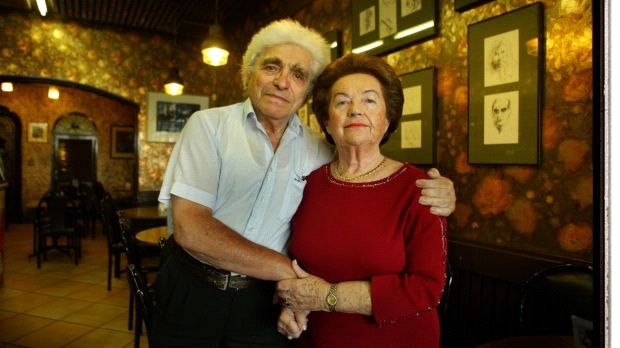
Avram and Masha Zeleznikow at Cafe Scheherazade on Ackland Street. Photo: Simon O'Dwyer
Masha's life changed greatly on September 1, 1939 when Germany invaded western Poland. Her father, aware of the potential atrocities, fled with his family to the Soviet Union. For 18 months, as enemy aliens, they were shunted around Siberia in cattle trains.
After the Germans invaded the Soviet Union in June 1941 Masha attended school in Soviet Central Asia, primarily in Kazakhstan, and helped her father in his work.
When the war ended in May 1945, the Frydmans returned to their family home. Masha began studying medicine at the University of Lodz. There she met the love of her life, the Vilna Ghetto partisan Avram Zeleznikow.
Although the Holocaust had ended, anti-Semitism persisted in Poland; 40 Jews died in the Kielce Pogrom of 1946. When it became obvious that the Polish elections of 1949 would be rigged by the communists, Josef Frydman was determined to flee to Paris. Masha was initially unhappy with his decision, because she would not be able to complete her medical degree.
Masha and Avram travelled separately. Having served as a partisan attached to the Soviet Army, Avram had to leave Poland illegally. The couple were reunited at the Scheherazade nightclub in Paris.
They married in 1948 and had a son, John, in June 1950. Eager to be as far away from the horrors of Europe as possible, the family migrated to Australia in 1951.
But Masha's life was never easy – John contracted polio in 1953, and life in Australia was harsh. There was a limited need for Yiddish teachers in 1950s Melbourne, so Avram undertook manual labour.
When, in May 1958, Masha and Avram bought O'Shea's Milk Bar in Acland Street, Masha conceived the idea of opening an Eastern European Jewish restaurant called Scheherazade. The restaurant was open 15 hours a day, 364 days a year – Yom Kippur, the Day of Atonement, was the only day it closed. In the 1960s and 1970s, many patrons were single male Holocaust survivors. They longed for company and the food they had treasured as children. Masha met their needs and acted as a de facto mother. For 20 years, she worked hard to develop the restaurant.
Scheherazade was at the vanguard of Australian culture. Actors, singers, artists and politicians frequented the cafe. Joan Sutherland was a regular visitor and the artist John Howley and his family ate three meals a day there. During the 1972 election campaign Gough Whitlam, Bob Hawke and Al Grassby visited the restaurant.
As well as providing nutrition, she provided support for the refugees' souls.
On most evenings and on Sundays, the restaurant and Acland Street were home to much argument and discussion of the great issues of the day. While Avram was engaging in Jewish community politics and teaching Yiddish, Masha was busy in the shop, or engaging with her children. In October 1977, Masha lost her 17-year-old daughter Barbara in a car accident. Her son moved to the US to become a professor. Masha needed to fill a vacuum, as she found it difficult to cope with grief. She could no longer face meeting Scheherazade customers, who would commiserate with her, increasing her trauma.
Instead, she decided to help those in need. At this time Soviet Jewish refugees started arriving in Australia. The Australian Jewish community, which had so successfully advocated on behalf of the "Refuseniks", as the refugees were originally known, was not prepared to cope with their needs. Masha stepped in. Avram had been involved with Australian Jewish Welfare and Relief Society since 1969, and was close to the then president Walter Lippman. They identified the needs of the refugees: meeting them on arrival, and providing accommodation, food and jobs.
Walter and Avram were excellent planners, but as always, Masha was the doer. As well as providing nutrition, she provided support for the refugees' souls. She founded the Tuesday Club – offering lunch, entertainment and company. It has been held on the first Tuesday of every month, bar January, for the past 38 years. While open to all, its major attendees have been isolated elderly Soviet Jews. In October 1983, while visiting his son, Avram had a heart attack in Boca Raton, Florida. For the next 30 years, Masha's major goal was to care for him.
Because of his experiences during the war, Avram was driven to educate the public about the horrors of the Holocaust. With the formation of the Raoul Wallenberg Unit of B'nai Brith, Masha saw an opportunity to publicise these issues. For many years, she was active in Courage to Care, an exhibition which toured Victorian country towns, extolling the valour of righteous gentiles.
This dynamic 80-year-old Polish Jewish refugee was often seen conversing with rural Australian schoolchildren.
As a follow-up, organised funding allowed Victorian teachers to attend seminars and receive training at Yad Vashem, the Holocaust Education Centre in Jerusalem.
Masha and Avram received OAMs in January 2003, in recognition of their contributions to the Jewish and wider communities. Masha was named Victorian Senior of the Year in 2015.
Masha was greatly worried about contracting dementia or becoming immobile, and spending her final years in assisted accommodation. While she will be greatly missed, she died as she often said she wanted, painlessly and quickly.
The cafe she worked so hard to establish was celebrated in Arnold Zable's novel Cafe Scheherazade and a plaque marks the place where it stood for almost half a century.
Masha was predeceased by her husband Avram and daughters Barbara and Janet. She is survived by her son John, daughter-in-law Lisa and seven grandchildren.
Written with the assistance of Arnold Zable.
Once upon a time, Richard Neville played Peter Pan to the Baby Boomers of Britain. He died on Sunday at the age of 74. Not because of the fairy dust indulgently sprinkled in his youth, but in consequence of alzheimers, an illness that had dogged his father and family.
In his heyday, a period bounded by the two Oz obscenity trials in Sydney (1964) and London (1971), he emerged as the provocative and witty spokesperson for the generation that questioned the assumed wisdom of its elders, mired in sexual hypocrisy, homophobia, discrimination against women and blacks, and loyally following the US into the war in Vietnam. Noted for schoolboy bravado ("always the first to buy the condoms" recalled Martin Sharp) Neville was in due course called upon to show true bravery.

The three editors of the controversial Oz magazine (from left) James Anderson, Felix Dennis, and Australian Richard Neville. Photo: UPI
Always charming, with a curiosity which pushed him beyond contemporary taboos, he reached his pinnacle of influence in the summer of 1971, on his release from prison after a six-week trial which had produced more letters to the The Times than the Suez Crisis. He had been charged with "conspiracy to produce a magazine with intent thereby to debauch and corrupt the morals of young persons within the realm".
His trademark hippie hair newly shorn by the prison barber, he was rushed to the BBC studios and accorded an overly respectful interview with David Dimbleby, agog for further details of the "alternative society" condemned by the prosecution as involving "dope, rock and roll and f---ing in the streets". It turned out to be a commitment to sexual equality, rock 'n' roll and human rights. His words were picked up by Tony Blair, twenty-five years later, for his barn-storming "New Labour" election campaign: "As Richard Neville said, there is only an inch of difference between us and the conservatives, but it is an inch worth living in."

"There is only an inch of difference between us and the conservatives, but it is an inch worth living in." Photo: Bryan Charlton
After an inconsequential school career at Knox grammar, Neville's effervescent imagination took flight at the University of NSW, where he edited the student paper and published the savage cartoons of Martin Sharp. In 1963 they teamed up with Richard Walsh, a brilliant, acerbic medical student, to produce Oz, a satirical magazine printed by an ageing national treasure, Francis James, at the Anglican Press.
Sydney in the 60s was a city rife for lampooning; it reeked of corruption and cover-up. Politicians and police were on backhanders from illegal gaming and abortion, the RSL was racist and the Sydney Morning Herald could be relied upon as a barracker for the establishment. Neville now made his career choice; to follow in the footsteps of the small boy who pointed out the emperor had no clothes. His first target was Sydney's hypocritical Archbishop Gough, forever denouncing youth for "wallowing in a mire of immorality" while himself wallowing in adultery in the Eastern suburbs. Even when this promiscuous primate was shipped off to the smallest parish in England, the Herald maintained a discreet silence.
Nemesis duly came, ironically for publishing Martin Sharp's deeply moral, and appropriately savage, attack on a craze for drunken gate-crashing The Gas Lash. A moronic magistrate convicted and sentenced Neville, Walsh, Sharp and James to terms of imprisonment. A bevy of liberal lawyers, led by John Kerr QC and Neville Wran QC, were hired to extricate them, and Oz survived, although without the talents of Neville and Sharp, who hit the hippie trail to London via Kathmandu.
In London Oz was reinvented (with a nod to the Wizard) in Todd-AO colours, with contributions from Germaine Greer and Robert Hughes alongside the drawings by Sharp and David Hockney and American "underground" cartoonists like Robert Crumb and Gilbert Shelton. The theme this time was unapologetic libertarianism – personal, sexual, hallucinogenic and political, with specific issues directed to arguing for the rights of oppressed groups – women, blacks, gays and school kids.
It was the last-mentioned that gave Scotland Yard the opportunity to pounce, when Neville and his co-editors (Jim Anderson and Felix Dennis) gave bright teenagers the chance to edit a School- kids Oz. They railed against paedophile teachers (all too common in English schools) and mischievously depicted the much-loved British nursery character, Rupert Bear, with a truly bear-sized erection. Once again, Neville was in the dock, but this time it was in the Old Bailey on a charge of "conspiracy to corrupt public morals", which carried a maximum sentence of life imprisonment.
After a trial lasting six weeks and testimony to the public benefit of Oz which ranged from psychiatrists like Hans Eysenck and Edward de Bono, to Ronald Dworkin (the Oxford Professor of Jurisprudence) and the comedian Marty Feldman, the jury acquitted on the conspiracy charge. But the judge directed them to bring back a verdict of "guilty" on the obscenity charge, whereupon he ordered the defendants to be detained in prison for psychiatric examination.
As they were stark staring sane, and this was what was happening to dissidents in Russia, there was an uproar in Parliament, made all the more vociferous by their forced prison haircuts. Neville was jailed for 18 months and ordered to be deported (to Botany Bay, presumably) – a fate he could only avoid by marrying an Englishwoman. Anna Wintour offered her hand, although the Court of Appeal made the nuptials unnecessary by quashing the convictions.
Neville's charisma survived his haircutting – in my television drama about the Oz trial, he was played by Hugh Grant.
Neville was no street revolutionary. Violence shocked and actually frightened him. He came home ashen-faced after one meeting with "Angry Brigade" members who were planting small bombs at Miss World contests. The revolution he sought was in the mind and he was always willing to change his, if the evidence demanded. (A youthful belief that soft drugs conduced to peace and love was discarded when he researched all the killings of Vietnamese civilians by GIs high on cannabis). He was a provocateur, an adventurer and a journalist.
Those privileged to know will never forget his delight in new ideas, his ability to enthuse his friends to think about future prospects and perils of a technological and interconnected society, and his endless curiosity about what lies beneath the emperor's latest fashion. Neville was uncomfortable with the guru others wanted him to become. He tired of London but not of life, which he rediscovered with his partner, the Australian journalist Julie Clarke. Together they took on the exposure of serial killer Charles Sobhraj, which resulted in a much-televised book. They were married in a joyous ceremony beside a waterfall at "Happy Daze" in the Blue Mountains, his family property outside Blackheath.
Back in Australia for the second half of his life, he lived on his wit as a self-styled "futurologist" – a profession that enabled him to practice what he preached on The Midday Show, Extra Dimensions, and at corporate get-togethers. Many of his early insights on sustainability, environmentalism and wealth inequality are now widely shared, and his challenges to audiences to think about what the future might hold made his presentations entertaining as well as prescient. He delighted in provoking people to think differently, whether they were Channel 10 viewers or dons in an Oxford common room (where I first met him).
His books remain essential reading for those interested in decoding the 60s, from Playpower (a mischievous sub-Marcusean manifesto) to Hippie, Hippie, Shake, a slightly rueful, but very funny, look back in languor. Richard was supported in his early battles by Louise Ferrier, and in his later life and throughout his debilitating illness by Julie and their two devoted daughters, in whose achievements he took such pride: Lucy (already a published author) and Angelica, who is working with refugees. Those of us privileged to have played against power alongside him will remember the warmest and most generous of friends, a man with a deep moral vision and, when it came to the crunch, the courage of his convictions.
Geoffrey Robertson QC
(Robertson contributed to Oz magazine in Sydney and helped prepare the legal case when John Mortimer took on the British legal establishment)


Renowned journalist, historian, and editor Allister Sparks passed away on Monday after a short illness. J. BROOKS SPECTOR had last seen him just a few weeks earlier at the memorial service of yet another towering figure, advocate Jules Browde, and the news of Sparks’ passing has come as a great shock. Spector contemplates Sparks’ place in South Africa’s modern history.
Allister Sparks was a fixture of South Africa’s media royalty for more than half a century – and one of the proudest exponents of the media’s crucial role in his nation’s history. In his final published book, a personal memoir entitled The Sword and the Pen that was released in March 2016, Sparks attempted to define himself in the context of the history of his country and the part of that world he knew best and which he had learnt to savour early in life.
Right at the opening of his memoirs he had written:
“I was born on the frontier. Literally. The border of our Eastern Cape farm was the Black Kei River near its confluence with White Kei to form the Great Kei, which flowed into the Indian Ocean some 75km north of the port city of East London and itself formed the border between the white settlement region of Britain’s old Cape Colony and the large “native reserve” of Transkei. It was thus the first fiercely contested frontier between white and black in South Africa – between the white settlers who had been moving up the east coast since landing at the southern tip of the continent in the mid-17th century and the indigenous black Africans who had been drifting southwards for centuries in slow rhythmic shifts of generational expansion. It was an encounter that was to become the quintessence of all our history. And thus, too, of my life.”
But of course he was much more than just the sum of that historic clash. He became one of South Africa’s finest journalists, and one of its most courageous editors, as well as a widely read and appreciated contemporary historian. And he was a man who understood that the very craft of journalism he worked at so effectively also needed to be nurtured and passed on to future practitioners. Such an understanding was key for Sparks when he led the way in establishing the Institute for the Advancement of Journalism in Johannesburg in 1992.
Sparks had honed his craft – in homage to the familiar adage that described journalism as the first draft of history – the old-fashioned way as he served an apprenticeship through several rounds as a cub reporter for small, local papers, as a general reporter for yet bigger papers, as a sub-editor, and then, eventually, up the ladder as a parliamentary correspondent and into various levels of editorship.
Along the way, in 1962, he received one of those coveted Nieman Fellowships for a year of study, writing and thinking at Harvard University in Cambridge, Massachusetts. And all this was prelude to his glory years as chief editor of the Rand Daily Mail (following in the footsteps of the crusading editor, Laurence Gandar) – at a time in South Africa when journalism could be a calling or the road to a prison cell or even a death sentence.
Aubrey Matshiqi, a fellow columnist on Business Day (and a former MK veteran), said of Sparks that he “belonged to a generation of journalists whose fearless opposition to the ravages of the apartheid regime made them an integral part of the struggle against apartheid. Theirs was a golden age of journalism, an age which coincided with one of the darkest periods in our history. Sparks’ legacy of courageous journalism is one of the reasons we are blessed with a constitutional order in which media freedom has embedded itself.”
It is important to remember that Sparks was a reporter and then an editor at a time when there was no internet, no social media, no television (until 1976 and then only in a few homes at first), and all of the local radio channels reported the news the government’s way. Consequently, reporting from someone like Allister Sparks, or in the paper he edited, became crucial opportunities for South Africans to learn about the horrors of the apartheid regime so that no one could honestly say, later, “They didn’t know.”
Perhaps his finest moments came when he led his “troops” in their assaults on the apartheid machine as they uncovered and wrote about such things as the grim truth of the death of Bantu Stephen Biko at the hands of the police, or that tangled web of corruption that was at the heart of the Info Scandal. The latter included the use of secret government budgets to create a newspaper that would support government policies domestically in opposition to real newspapers, as well as to purchase newspapers abroad with those same secret funds in order to bend foreign coverage of South Africa to shine the most favourable possible light on apartheid’s many madnesses.
Thinking about Sparks’ impact in such circumstances, broadcast journalist (and also contributor to this publication) Stephen Grootes said of Sparks:
“With his insistence on revealing the truth about the murder of Steve Biko, Allister Sparks did what most journalists can only dream of. He changed history, he changed the story, he told the truth. To do this required guts, strength and a real devotion to his craft. I can’t help but feel that without such an important exposé in our history, so much else would have been kept hidden.”
But perhaps even more than simply leading his reporters and editorial deputies, Sparks worked hard to protect them from the timorousness of his own newspaper’s business management. These were directors who sometimes seemed over-eager to wilt before advertisers increasingly eager to abandon a paper causing trouble for profits by tackling the government, as well as losing subscribers less and less willing to buy a paper that was taking on the government and giving everyone the bitter aftertaste of a conscience.
Eventually, the owners of the paper, South African Associated Newspapers – in a complex financial tower that eventually led back to the Anglo American Corporation -- tossed Sparks overboard from the Rand Daily Mail ship. This happened even as the paper was garnering an extraordinary global reputation under Sparks’ editorship for its tenacity and courage in the face of a seemingly implacable government security juggernaut.
At that point, many people might well have said, “Oh well, okay, then. Off you go to your retirement and some engrossing but unthreatening, anodyne hobbies like fly fishing or numismatics.” Instead, Sparks began yet another chapter in his life as an increasingly valued “foreign” correspondent for European, British and American newspapers – Sweden’s NRG Handelsblad, Britain’s The Observer and The Economist, and The Washington Post in America.
In so doing, Sparks educated a global audience about what was taking place inside South Africa and throughout the region as a whole. This reporting was deeply informed by his decades of writing about a nation and a subcontinent he already understood better than most. Along the way came his highly regarded trilogy of books on South Africa’s contemporary history: The Mind of South Africa; Tomorrow is Another Country; and Beyond the Miracle, as well as the authorised biography of Archbishop Desmond Tutu (together with Mpho Tutu).
This writer, living and working in East Asia or in Washington during much of that time, but still eager to understand what was happening in South Africa while far away from the country, came to rely upon Sparks’ careful reporting in The Post and The Economist, especially as the political, societal and economic circumstances in South Africa seemed to come ever closer to the abyss. Unlike so many other reporters from the “frontlines”, in his writing for overseas audiences Sparks never seemed to put himself in the centre of the action. The story was the key – and explaining it was the goal. His writing was consistently pellucid and sympathetic to the underdogs, always clear-eyed and factual – but with a steady sense of right and wrong.
As veteran journalist Peter Fabricius said upon hearing of Sparks’ passing:
“He was a journalist to the marrow and I especially respected him for the way he never lost his journalistic curiosity despite his achievements as an editor. He continued to look for the great story. I think for instance of his scoop in the mid-1990s – which became a great book – about the secret negotiations which Mandela had conducted with the National Party government from jail. He also continued to hold the ANC government to the same standards as he had held the apartheid government, which was probably rather a shock to them, but showed the respect for his readers which was the cornerstone of his journalism.”
Almost to the end, Allister Sparks wrote his typically thoughtful, articulate columns for Business Day, trying to give his readers a sense of scale and history on whatever he wrote on, rather than simply rehashing the news of the day. Even that one, much-criticised hiccup, his mention of HF Verwoerd, the veritable architect of apartheid, as a brilliant politician, when Sparks had spoken at a dinner in honour of then-DA leader Helen Zille (who had, in fact, been one of the young reporters on the Rand Daily Mail who had broken the story about the death of Steve Biko way back when), should not weigh against him. It was certainly not meant as nostalgia for a lost apartheid Valhalla. Instead, it seems more to have been meant as a commentary on the truth that brilliance, sans humanity, becomes a home for monsters.
When he passed away, Allister Sparks reportedly had still other writing projects in various stages of preparation, working from a home office that housed an invaluable archive of material on South Africa’s modern history. And in the closing lines of his memoir, The Sword and the Pen, Sparks had set out his credo for his sense of the future of a country (and for a world) he loved so much, and about which he had reported on so bravely for so many decades.
On the final page of his memoirs Sparks wrote:
“…All of us in this shrinking world have to learn to live in harmony with ‘the other’. Nelson Mandela and Archbishop Desmond Tutu, both Nobel Peace Prize winners, have given South Africans the vision of a ‘rainbow nation’ at peace with itself and the world. Now we have to conjure up the vision of a ‘rainbow world’.
“Not easy. It’s going to require instilling a great deal of tolerance, empathy and human understanding. And we South Africans have been assigned the role of showing the way. The polecat of the world has become the pathfinder.”
His writing helped show the way. DM
Photo of Allister Sparks by Media24.
7 NOVEMBER 2016 from Gay Community News SX:
'True champion for equality': Tributes flow for SA gay advocate Ian Purcell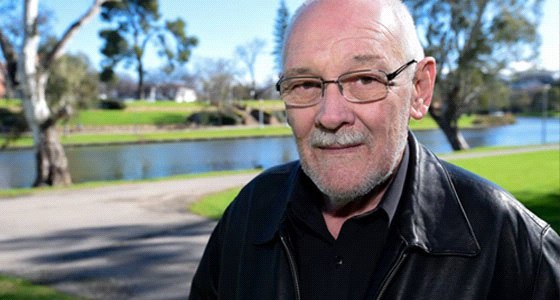
Image: Ian Purcell: Photo by Robert Knapman Photography
Tributes are flowing for South Australian gay rights advocate Ian Purcell, who has died aged 69.
Purcell had been diagnosed with terminal liver cancer and passed away in the early hours of Sunday morning (6 NOVEMBER 2016).
People have taken to social media to express their grief and sorrow over the news of Purcell’s passing.
Former Green Senator and LGBTI rights activist Robert Simms said Purcell was “a truly great South Australian who was a warrior for LGBTI rights and a friend and mentor to so many in our community. I know Ian's courage will continue to inspire generations of activists in the future. Rest in Peace Ian.”
Veteran LGBTI rights activist Rodney Croome praised Purcell as an “LGBTI human rights hero”.
“Ian Purcell was a role model for many people who today defend and celebrate the LGBTI community, both in Adelaide and beyond,” Croome wrote. “He was always uplifting of others when they were down, able to find a path forward when others were confounded and keen to instill hope in those who had lost heart. His cheerful voice over the phone was always a tonic for me at times of stress. His depth of knowledge about LGBTI history was a source of endless delight. His indefatigable optimism for the future and his perceptiveness about what is really happening today were always sources of inspiration and wisdom. With his passing Australia has lost an LGBTI human rights hero.”
South Australian Premier Jay Weatherill posted on Facebook: “Ian you are a titan of the ongoing campaign for equality for LGBTIQ South Australians. Thank you for everything you have done, for you sage advice and all your hard work.”
Rainbow Labor SA described Purcell as a “true champion for equality”.
A long-time advocate for Adelaide’s LGBTI community, Purcell was a central figure in the fight for equal rights in South Australia including ending legal discrimination against same-sex couples.
Over the course of nearly three decades, Purcell was involved with key LGBTI community organisations including the Uranian Society – a cultural group for gay men and of which he was the co-founder – as well as Gay and Lesbian Community Action, Gay and Lesbian Community Services, Parkestone Trust, Pride March Adelaide and the Community Safety Network.
Purcell also contributed to the preservation of Adelaide’s LGBTI history with the production of Pink Files and King of the West End.
In 2015, Ian was made a Member of the Order of Australia and in 2011, was named as the SA state finalist for the Senior Australian of the Year Award.
On Twitter, people from all over Australia posted their tributes to Purcell.
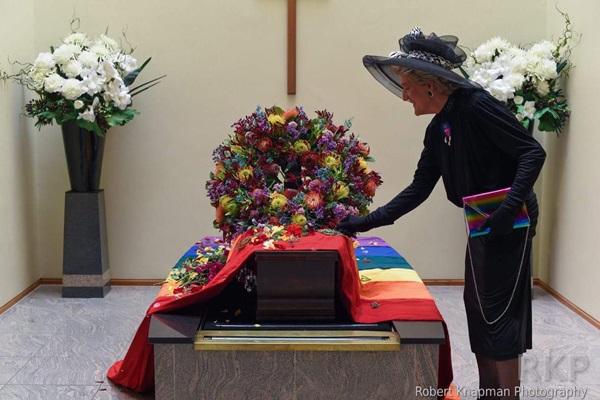
Gertrude Glossop pays respect to Ian Purcell - ROBERT KNAPMAN PHOTGRAPHY

22 MARCH 2017 From New York Times:
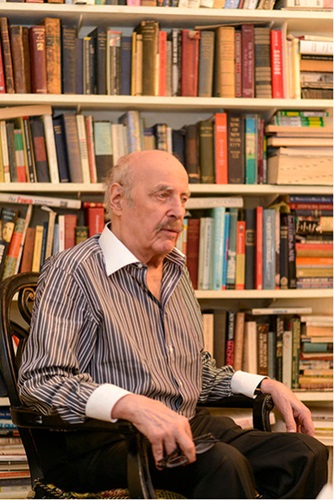
Dr. George Weinberg, a psychotherapist who coined the term “homophobia” during the 1960s, died this week at age 86.
George Weinberg, a psychotherapist who, in the mid-1960s, observed the discomfort that some of his colleagues exhibited around gay men and women and invented a word to describe it — homophobia — died on Monday in Manhattan. He was 87.
His wife, Dianne Rowe, said the cause was cancer.
Dr. Weinberg was preparing to speak before the East Coast Homophile Organization in 1965 when he began thinking about a recent incident. A group of colleagues, learning that a friend he was bringing to a party was a lesbian, asked that he disinvite her. He sensed not just dislike, he said, but also fear — a fear so extreme that it suggested some of the characteristics of a phobia.
“I coined the word homophobia to mean it was a phobia about homosexuals,” Dr. Weinberg told Gregory M. Herek, a professor of psychology at the University of California, Davis, in 1998. “It was a fear of homosexuals which seemed to be associated with a fear of contagion, a fear of reducing the things one fought for — home and family. It was a religious fear, and it had led to great brutality, as fear always does.”
Dr. Weinberg discussed his ideas with the gay activists Jack Nichols and Lige Clarke, who used the new term in a column they wrote for Screw magazine on May 5, 1969, discussing the fear felt by straight men that they might be gay. It was the word’s first appearance in print.
A few months later, Time magazine used “homophobia” in a cover article, “The Homosexual in America.” Dr. Weinberg used it for the first time in print in “Words for the New Culture,” an article in the newsweekly Gay in 1971, and discussed the phenomenon at length in his book “Society and the Healthy Homosexual,” published in 1972.
The invention of the term was “a milestone,” Dr. Herek wrote in the journal Sexuality Research & Social Policy in 2004. “It crystallized the experiences of rejection, hostility and invisibility that homosexual men and women in mid-20th-century North America had experienced throughout their lives.
“The term stood a central assumption of heterosexual society on its head,” he continued, “by locating the ‘problem’ of homosexuality not in homosexual people, but in heterosexuals who were intolerant of gay men and lesbians.”
George Henry Weinberg was born on May 17, 1929, in Manhattan, where he grew up in Washington Heights. His father, Frederick, was a lawyer who left the family when his son was just a few months old. George did not see him again until he was 18. His mother, the former Lillian Hyman, who had never advanced beyond the seventh grade, took a typing course and found work as a legal secretary.
He attended City College, where his skill at poker and billiards helped defray his living expenses, and earned a master’s degree in English from New York University in 1951, writing a thesis on Samuel Johnson. He remained a passionate Shakespearean, mining the plays for psychological insights that led to two books, “Shakespeare on Love” (1991) and “Will Power! Using Shakespeare’s Insights to Transform Your Life” (1996), written with Ms. Rowe, his sole survivor.
He studied mathematics and statistics at the Courant Institute, a part of New York University — he would later write a textbook, “Statistics: An Intuitive Approach” (1974), and a mathematical fable, “Numberland” (1987) — but found that he enjoyed talking to people about their problems and trying to solve them.
He left math behind and earned a doctorate in clinical psychology from Columbia, writing his dissertation on clinical versus statistical prediction in psychology. Dr. Weinberg wrote several books aimed at the general reader. He dealt with personality formation in “The Action Approach: How Your Personality Developed and How You Can Change It” (1969) and “Self Creation” (1978); with obsessive behavior in “Invisible Masters: Compulsions and the Fear That Drives Them” (1993); and with relationship problems in “Why Men Won’t Commit: Getting What You Both Want Without Playing Games” (2003).
He was best known, however, for “Society and the Healthy Homosexual,” one of the first books to reject the idea, prevalent in the psychiatric profession, that homosexuality was a psychological disorder.
Dr. Weinberg, a staunch and very public advocate of gay rights, helped lead the campaign that led the American Psychiatric Association to remove homosexuality from the second edition of its Diagnostic and Statistical Manual, a handbook of psychological disorders.
“I felt like an apostle of the obvious, and people imagined I was doing something daring,” he told Gay Today in 2002.
Over time, “homophobia” evolved from a rallying cry to a contested term. Critics, both gay and heterosexual, argued that however useful the word might be as a political tool, or as a consciousness raiser, it did not withstand scrutiny. Homophobia, they pointed out, was not precisely equivalent to an irrational fear of snakes or heights, and the emotions associated with it were more likely to be anger or disgust than fear. Its meaning had become too diffuse, they argued, covering everything from physical assault to private thoughts to government policies.
In 1992, The Associated Press, in a revision of its stylebook, discouraged use of the word. “Phobia means irrational, uncontrollable fear, often a form of mental illness,” David Minthorn, The A.P.’s deputy standards editor, wrote in a column. “In terms like homophobia, it’s often speculation. The reasons for anti-gay feelings or actions may not be apparent. Specifics are better than vague characterizations of a person’s general feelings about something.”
Dr. Weinberg remained unconvinced. The phenomenon still existed, he asserted, and only one word did it justice.
“As long as homophobia exists, as long as gay people suffer from homophobic acts, the word will remain crucial to our humanity,” he wrote in The Huffington Post. “Indeed, the next big step should be to add ‘homophobia’ to the official list of mental disorders — not to cleanse the language of it.”
Correction: March 23, 2017
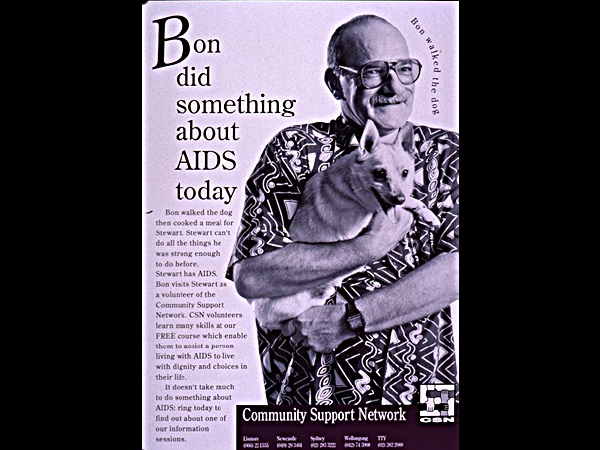
Community Support Network circa 1990
- "Bon did something about AIDS today"
- Bon walked the dog, then cooked a meal for Stewart. Stewart can't do all the things he was strong enough to do before. Stewart has AIDS. Bon visits Stewart as a volunteer of the Community Support Network. CSN volunteers learn many skills at our FREE course which enable them to assist a person living with AIDS to live with dignity and choices in their life.
It doesn't take much to do something about AIDS: ring today to find out about one of our information sessions
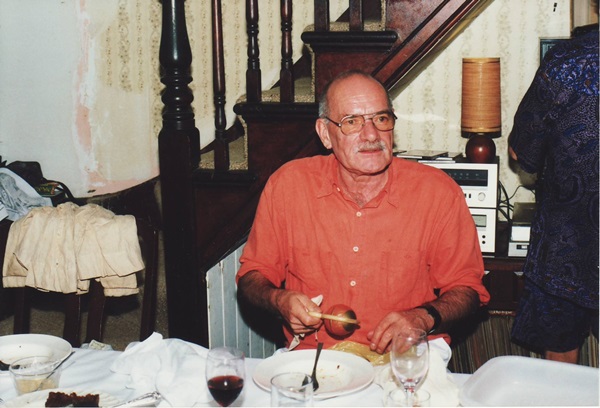
Christmas lunch at "Chequerboard" 16 Terry Street, Balmain, Sydney, 1999 - photo by Mannie De Saxe
From Sydney Morning Herald 24 May 24 2017
Peter Bonsall-Boone spent his life seeking permission. Permission to walk down the street with his lover hand-in-hand. Permission to make love without risking jail. Permission to demonstrate that love to the world through marriage.
In the end, he died waiting for permission that never came.
Peter Bonsall-Boone is farewelled by his partner Peter de Waal. The couple marched in the first Mardi Gras.
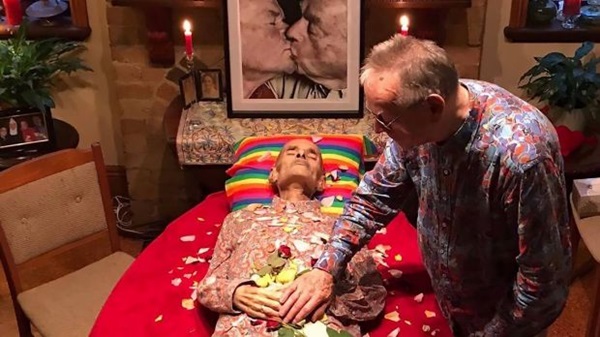
Peter Bonsall-Boone is farewelled by his partner Peter de Waal. The couple marched in the first Mardi Gras. Photo: William Brougham
"It looks like we've missed the boat," he told his partner of 50 years, Peter de Waal, in his last lucid days. "Bon", as he was universally known, died peacefully on Friday, aged 78, two years after his cancer diagnosis.
As lifelong activists, Bon and Peter forged a path for the gay and lesbian community. Together, they shared Australia's first televised gay kiss, established a counselling service from their Balmain home and confronted police during the first Mardi Gras parade in 1978.
Peter Bonsall-Boone and his partner Peter de Waal.
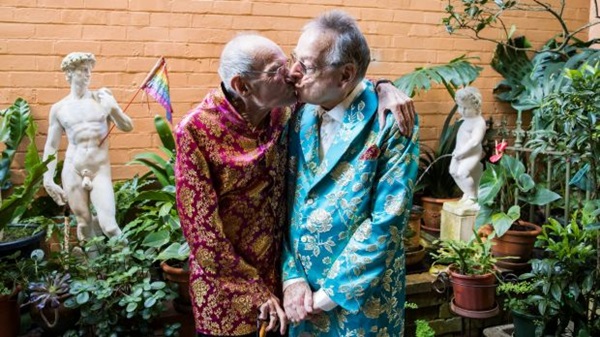
Peter Bonsall-Boone and his partner Peter de Waal. Photo: Edwina Pickles
On marriage equality, however, they ran out of time. "The fact that Bon died as a second-class citizen is of concern to me," Peter tells the Herald. "And it was to him as well."
Sadness remains, but anger has given way to disappointment: in politics, and those doing the politicking. While polls show a sizeable and consistent majority of Australians support legalising same-sex marriage, the Coalition government under Malcolm Turnbull has refused to allow a parliamentary vote on the issue until a public plebiscite is held.
"We have a Parliament with a house of representation, and to me representation means those who are in the House are supposed to follow our wishes and implement them," Peter says.
"In many ways, marriage equality is just such a simple issue for the Parliament to deal with. And yet there is that unwillingness to move just a little bit."
He holds openly gay Liberal MPs particularly accountable for their reluctance, thus far, to cross the floor and bring the issue to a head.
One such MP, Trent Zimmerman, agreed time is of the essence, and warned his colleagues they could no longer delay a vote indefinitely.
"[Bon's] sad death is a reminder that this isn't an esoteric issue that can be continually kicked down the road," he told the Herald.
"There are people that want to get married today, including many older people. That's why I prefer for this matter to be dealt with in this Parliament.
"For me, I think we should have a free vote. That is the best way of securing passage of the bill. That will actually require support from amongst my Coalition colleagues."
It would also require the endorsement of the Prime Minister, a long-time supporter of marriage equality, but a prisoner of the Abbott-era plebiscite and his party's right-wing.
That may change, but for Peter and Bon, it will always be too late.
"I'm inclined to say 'shame on you', Mr Turnbull," Peter says. "How can you say you want a fair and just Australia when you ignore our community?"
Peter Bonsall-Boone donated his body for scientific purposes. A memorial service is planned in June.

Anthony Foster, the tireless advocate for victims of child sexual abuse, is to receive a state funeral.
Mr Foster, who ran a high-profile campaign accusing the Catholic Church of covering up abuse, died on Friday evening (26 May 2017) at the age of 64 after suffering a stroke.
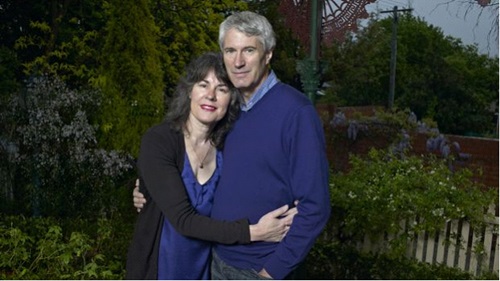
Premier Daniel Andrews said he offered Mr Foster's family a state funeral on Sunday afternoon, and his wife Chrissie had accepted.
Mr Andrews said Mr Foster would be remembered as a man who "quietly and profoundly changed Australian history", after campaigning for justice from the Catholic Church.
"He fought evil acts that were shamefully denied and covered up," Mr Andrews said in a statement. "He and Chrissie lost so much, but never their dignity, grace and strength. Anthony won't be forgotten, and the fight for justice goes on."

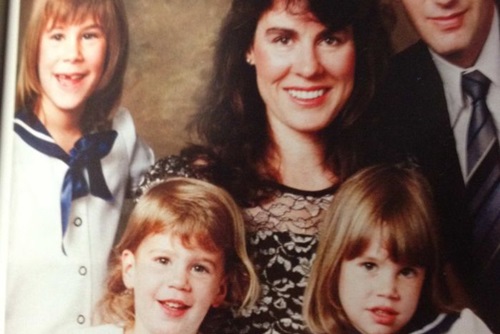
Two of the Foster's daughters, Emma and Katie, were repeatedly raped by notorious paedophile priest Kevin O'Donnell while primary school students in Melbourne's Oakleigh parish.
Mr Foster came to attention after publicly accusing Cardinal George Pell of hampering the family's compensation claim against the Catholic Church when he was archbishop of Melbourne.
After a decade-long court battle, Emma took her own life at the age of 26. Her sister Katie drank heavily before being hit by a drunk driver in 1999, leaving her severely disabled and needing around-the-clock care.
Mr Foster famously told the Victorian inquiry into child sex abuse that Cardinal Pell had shown a "sociopathic lack of empathy" when he met with them.
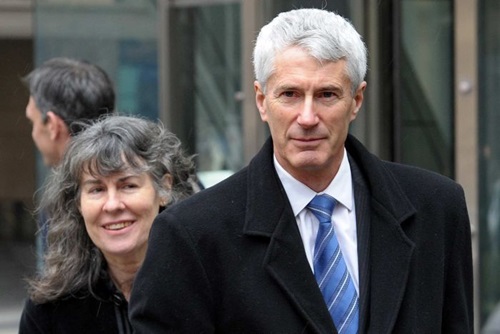


Graham at the Royal Botanic Gardens c. 1973 - photo by Gary Jaynes

Graham Carbery's house in Ivanhoe in 1995 where the Australian Lesbian and Gay Archives - ALGA - was housed below the house in an area specially converted for the purpose. Gary Jaynes and Graham Carbery discussing an ALGA item.

Gary Jaynes, Graham Carbery and Kendall Lovett discussing ALGA issues.
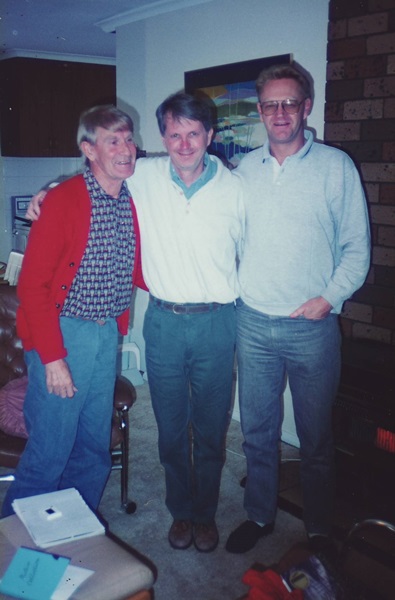
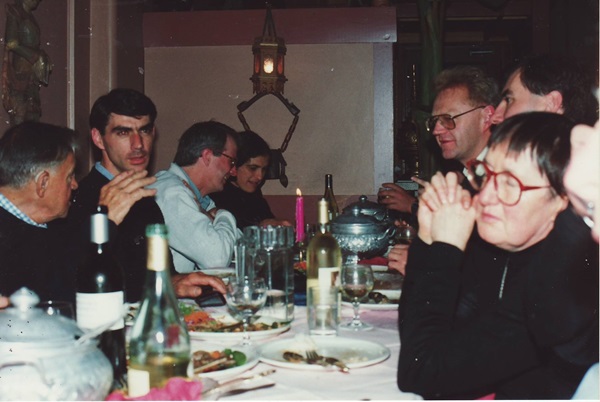
At the 75th birthday dinner for Walter Hillbrick at a restaurant in 1995
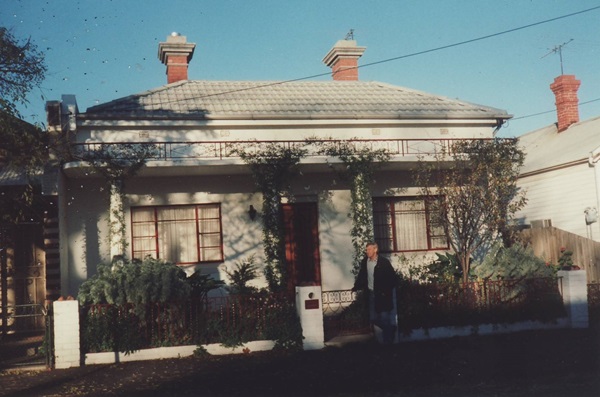
Graham's house in North Fitzroy where we stayed a few times when we were in Melbourne from NSW for various events between 1996 and 1999
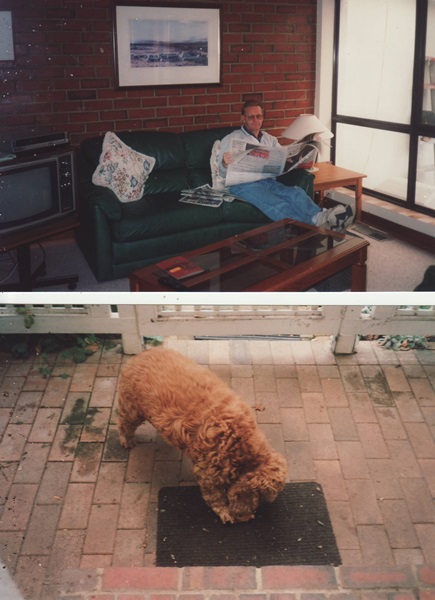
Graham relaxing inside and Arthur not relaxing outside the house in North Fitzroy
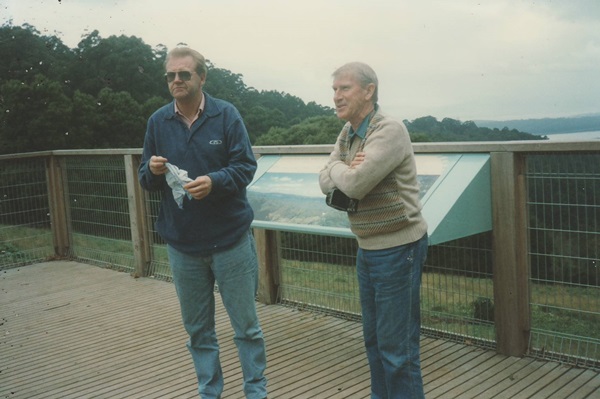

Graham took us sightseeing to the Dandenongs in the late 1990s - and the next picture is Arthur waiting patiently to be given his food after our outing
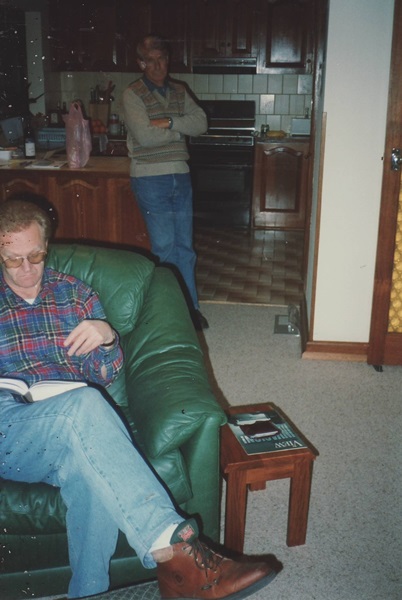
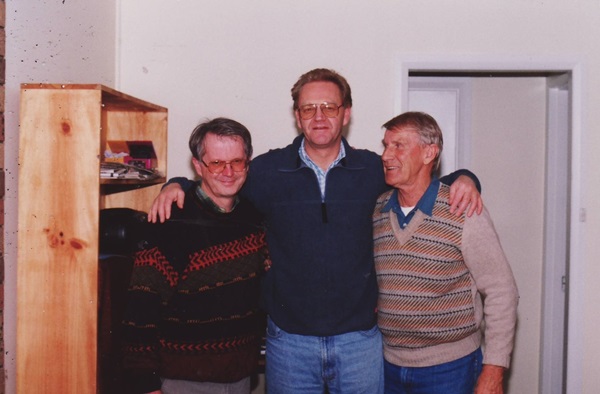
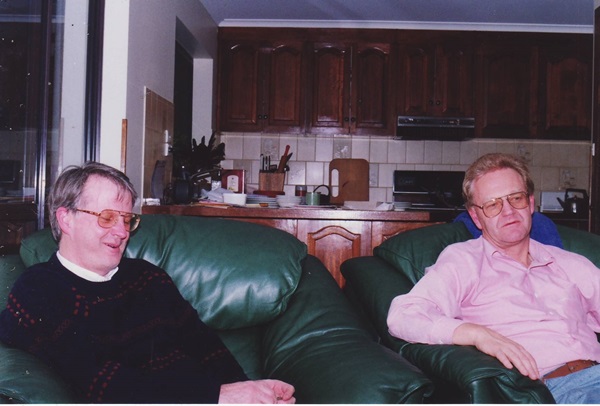
At home in North Fitzroy with Graham, Gary and Ken
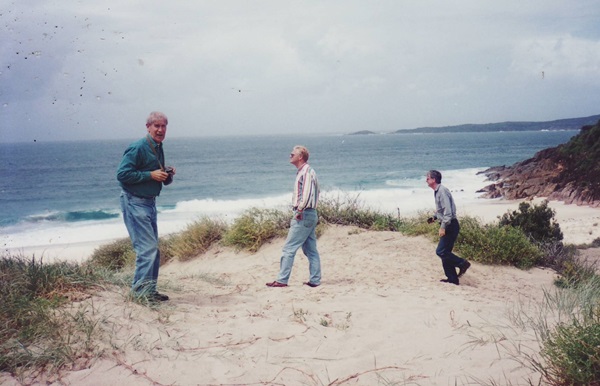
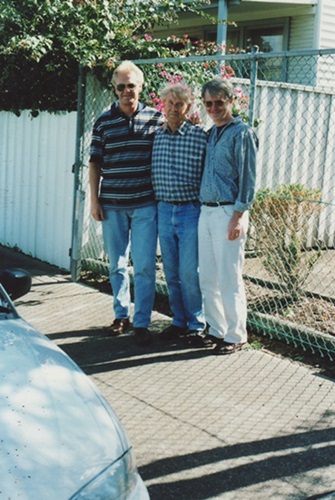
Graham and Gary on a visit to Newcastle where Ken Lovett lived between 1994 and 2001 - first a visit to Port Nelson, north-east of Newcastle and then outside Ken's house in Maryville, Newcastle
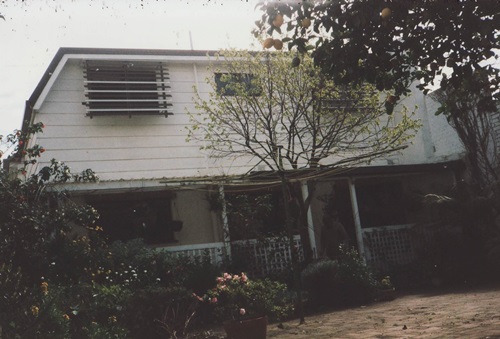
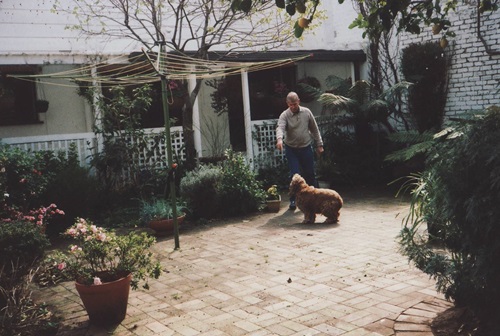
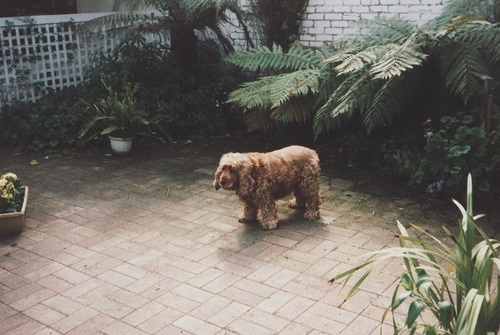
In the back garden of Graham's house in North Fitzroy- Arthur and Ken getting to know each other


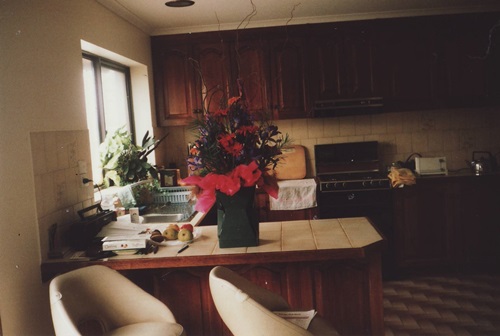

Dinner and party in 1998 to celebrate the Twentieth Anniversary of the founding by Graham Carbery in 1978 of the Australian Lesbian and Gay Archives - and the flowers presented to Graham which were taken home to North Fitzroy after the party
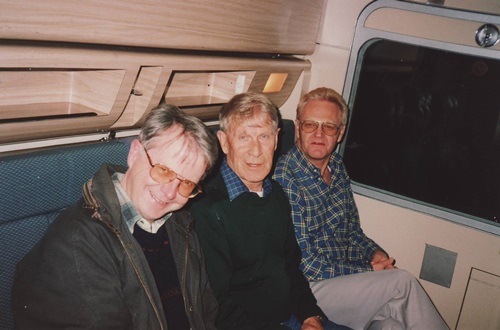
Graham and Gary took us to the station to catch the Overland night train to Adelaide
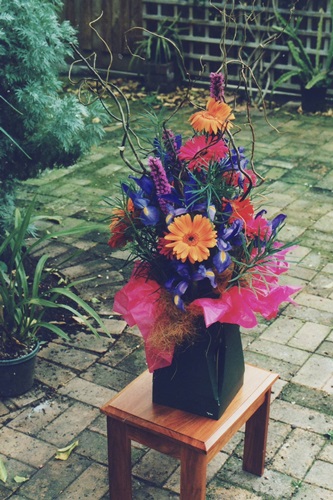
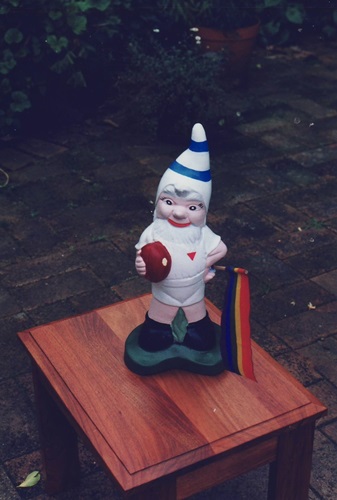
The flowers and figurine given to Graham at the 20th anniversary evening in the back garden at North Fitzroy
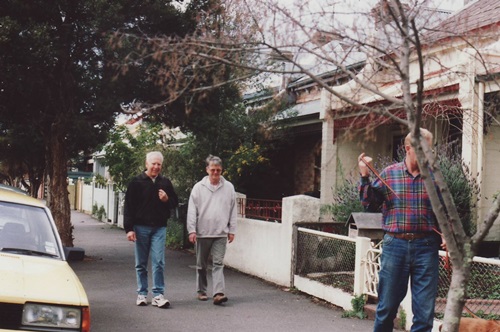
"Walking the dog" around the streets near Rae Street, North Fitzroy
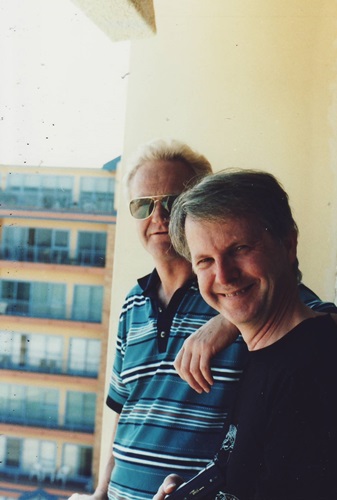
Graham and Gary in the house at Rae Street, North Fitzroy
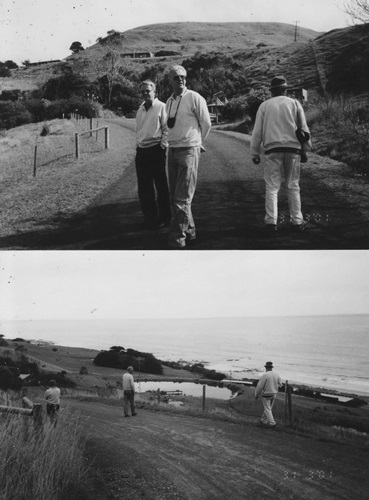
Trip to Apollo Bay down the Great Ocean Road circa 2001-2002
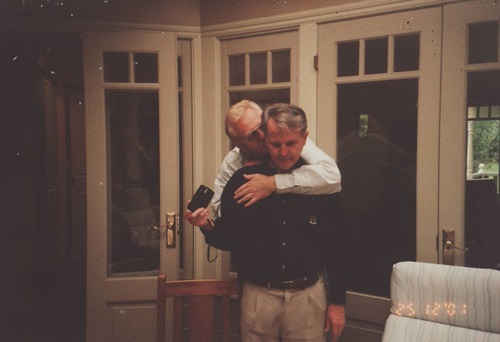
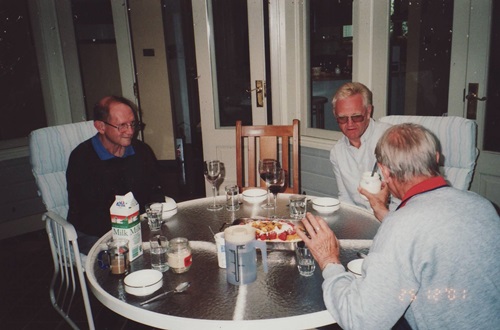
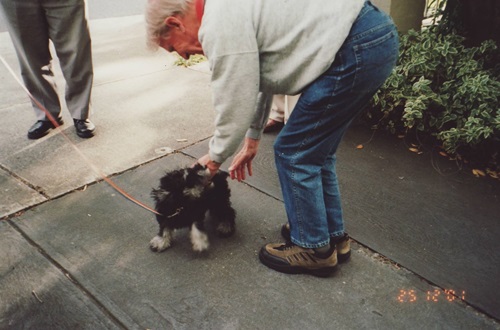
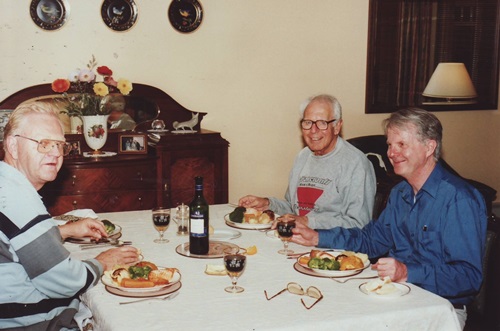
Our first Christmas after moving from NSW to Melbourne and the day spent at Graham's new house in Mont Albert - 25 December 2001
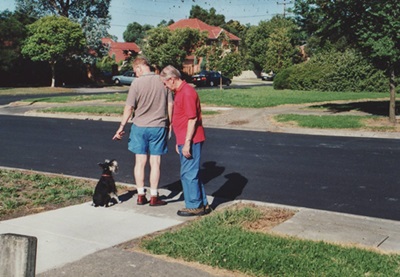


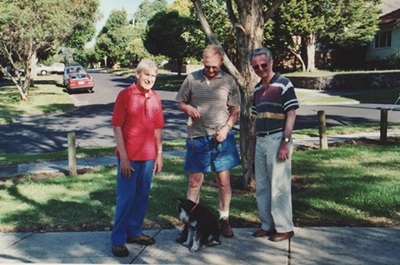
A beautiful summer day in Mont Albert and "walking the dog" Arthur number 2
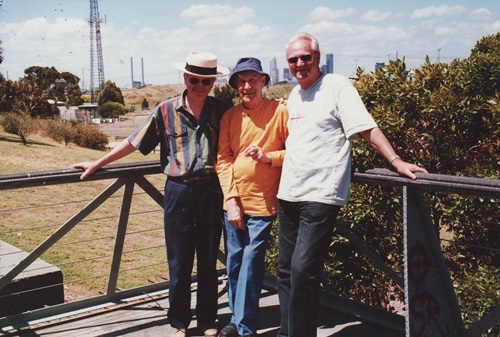
An outing with Graham and Gary to visit a park in Maribynong - again a beautiful summer day circa 2003-2004.

Graham and Gary took us to Beechworth for the day to celebrate the 90th birthday of Ken Lovett's sister, Julie Daley, on 4 July 2015
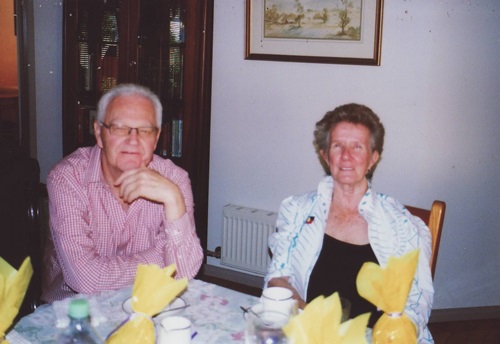
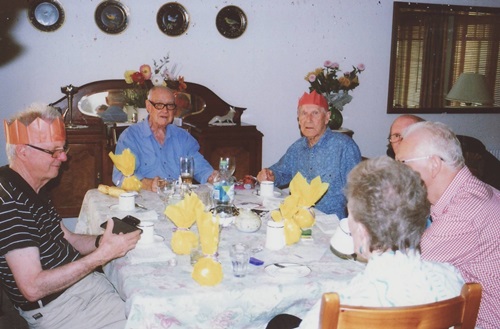
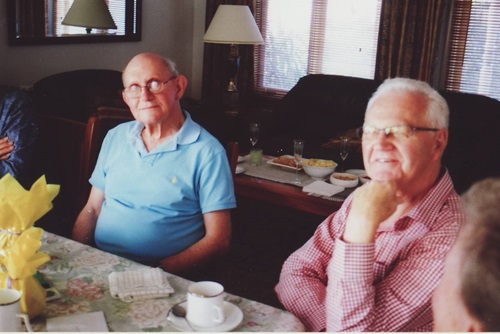
Christmas Day at Mont Albert, 25 December 2016 with Liz Ross, Kevin Anderson and Ashley Roberts, and of course Ken and Mannie and Graham and Gary.
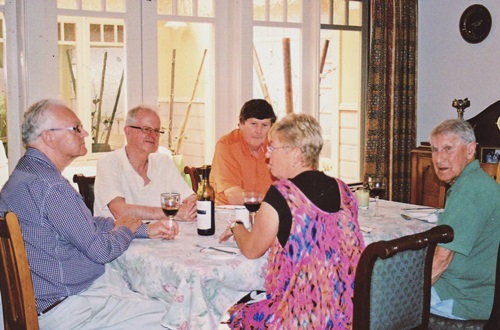
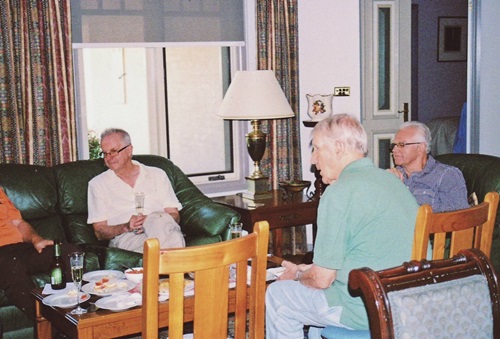
Visit to Mont Albert from Adelaide of Jo and Kevin Gillis 2016-2017
Sad to report the death in Melbourne of Graham Carbery, early gay liberationist, an 'out' TAFE teacher since 1976 and an active member of Gay Teachers & Students Group, a 78er, one of the publishers, and spokesperson, for the important text "Young, Gay & Proud", author of a history of the Sydney Mardi Gras, but mostly renowned as the principal founder of the Australian Lesbian & Gay Archives in 1978. His coming out as an AFL umpire saw him subject to taunts and verbal abuse which he handled with courage. He was effervescent, loved life, loved a joke but mostly loved Gary, his partner of 45 years to whom our thoughts turn. He was a gay liberation pioneer who made a difference.
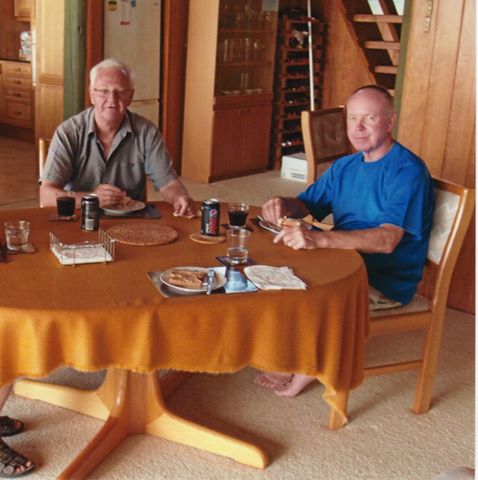
(Pic: Graham (l) and fellow ALGA stalwart Rob Thurling in 2012 - Robert B French collection)
Nick Henderson shared Australian Lesbian and Gay Archives's post.
July 12 at 10:59amAustralian Lesbian and Gay Archives added 4 new photos.July 12 at 10:57am
It is with great sadness that we acknowledge the death of Graham Carbery, teacher, activist, VFL senior umpire, and archivist and historian for the gay and lesbian community. While Graham was an important gay liberation and law reform activist from 1972 onward, most notably with groups such as the Gay Teachers and Students Group and the Homosexual Law Reform Coalition, his legacy is the extent and longevity of the Australian Lesbian and Gay Archives, which he founded and committed much of his life to for the past 40 years. Graham is survived by his partner of 45 years Gary Jaynes, and our thoughts and love are with him, his family and friends.
Angela Bailey, ALGA President, on behalf of the ALGA Committee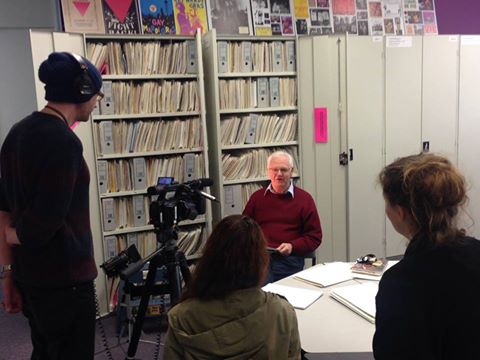
From Liz Ross on 17 JULY 2017
FOOTYALMANAC.COM.AU/GRAHAM-CARBERY-A-MAN-WHO-STOOD-UP#comment939012
Here is the full obituary as it appeared in The Age:
Graham Carbery 1947-2017 October 3 2017 the age Quiet life of service followed moment of fame Umpire Graham Carbery was the victim of one of football's most notorious incidents, but away from the headlines he lived a quiet life documenting the history of Australia's gay movements. • Graham Willett
Graham Carbery's 15 minutes of fame came in 1980 when he found himself at the centre of what became known as the "Carman Incident", a moment that has entered into Australian football's hall of infamy.
Carbery was a boundary umpire. "Fabulous Phil" Carman was one of the league's top players. There was an on-field contretemps and suddenly Carman head-butted Carbery. No player had ever assaulted an umpire like that. (No one has done it since, either).
The league officials weren't having it and Carman got a 20-week suspension. The case went off to the Supreme Court.
The media followed the episode avidly and went searching for more about this respected but otherwise obscure umpire. It didn't take long till his association with the Australian Lesbian and Gay Archives became known. For the rest of Carbery's life, the incident and his homosexuality were burned into people's memories (and more recently into Google).
In fact, "association" with the archives understates his role. Carbery founded the archives in 1978 after being involved in the gay and lesbian movement (as it was called then) for six years. He was a member of Gay Liberation. He was spokesperson for the publication Young Gay and Proud, written for gay children by a collective of teachers and students. (Among those who denounced this publication for its corrupting effect on youth was a then little-known backbencher, Jeff Kennett).
In the late 1970s Carbery became concerned that the history of the movement might be lost, and after visiting the Canadian Gay Archives he realised that something like that could be done here.
Practical but with an eye for the politics, he presented a motion to the 4th National Homosexual Conference, the endorsement of which gave the collection the imprimatur of what was in many ways the movement's decision-making body.
He contributed to the archives and to Australian queer history for more than 40 years. He housed the collection on more than one occasion, even digging a basement under his Ivanhoe home – building the collection in the most literal way imaginable.
In the early years he gathered a group of volunteers who made the collection and preservation of Australia's queer history a part of their lives. In 1983, he started ALGA's oral history collection, recording 38 interviews, giving us access to unique knowledge of what homosexual life was like in Australia from the 1930s onwards.
During Carbery's last illness he was still thinking about what he could do when he got out of hospital.
His publications included a state by state (and territory) survey of the move to decriminalisation in Australia. He authored a remarkably detailed history of the first 17 years of Mardi Gras, which remains a standard text. (Oddly, he never got around to going to Mardi Gras – he was a Melbourne boy, through and through.)
He served the archives with distinction, listing the periodicals that at the height of the publishing boom poured in every week – and chasing any that didn't turn up on time.
I didn't question it, it didn't bother me, I just knew I had to be discreet.
Carbery realised at about the age of 12 that he was homosexual and in his immensely practical way made it part of his life: "I didn't question it, it didn't bother me, I just knew I had to be discreet," he said in an interview.
Less well thought-out was his decision to join the Navy at the age of 16. Despite signing up for the standard nine years, he soon realised what a mistake he had made. So he "shot through", heading off to Brisbane to make a new life for himself.
Eventually he decided to clean the slate and let the Navy find him, served a brief period of detention and then managed to extract himself from his enlistment by telling the Navy doctor that he was homosexual. He was out in no time.
He came to teaching eventually, using his Bachelor of Jurisprudence to inform his teaching of legal studies at Footscray TAFE (later Victoria University). This was his calling, and even after retirement he ran revision lectures for VCE Legal Studies students – to his and their great satisfaction.
Graham's was a life lived in practical service to causes he believed in, quiet and unassuming and effective. He is survived by sisters and brothers Dianne, Judy, Neil and Helen and their families, and by Gary Jaynes, his partner of 45 years.


It is with sadness that we acknowledge the death this week of Dr Gary Simes, linguistic historian and bibliographer. Gary obtained his PhD in English from the University of Sydney in 1978, for a thesis on 'Malory's Quest of the Holy Grail : a study in changing ideals of chivalry'. However, it was for his later bibliographic and linguistic research for which best known.
In 1982 he published with Craig Johnston 'Homosexuality: myths and realities' for the Gay Rights Lobby (now NSW Gay and Lesbian Rights Lobby), and in 1993 the 'Dictionary of Australian underworld slang'. Simes’ bibliographic work fed into a number of articles for the Gay Perspectives series produced by the Australian Centre for Lesbian and Gay Research, including ‘The language of homosexuality in Australia’ (GP 1, 1992), and ‘Gay’s the word’: a history of gay in dictionary form’ (GLP 3, 1996). As well as into later articles, including: 'Gay slang lexicography: a brief history and a commentary on the first two gay glossaries' (Dictionaries, v.26, 2005).
In 1998 Gary’s published ‘Bibliography of homosexuality : a research guide to the University of Sydney Library’, a work rich in research and erudition, supported by the Australian Centre for Lesbian and Gay Research, where Simes was an administrator, and the Norman Haire Fellowship. The work explores the riches of Australia’s oldest University Library, including the Norman Haire bequest.
